NAVASOTA Explore

WWW. E XPLORE N AVASOTA.COM



McDougal & Moore serves the Navasota and Bryan/College Station area representing ranch and country properties, as well as commercial, industrial and development properties. We are ready to assist you. Fain McDougal 979.764.4000 TEXANS WITH EXPERIENCE IN REAL ESTATE ESTATE THAT’S REAL 211 East McAlpine St, Navasota, TX 77868 mcdougalandmoore.com Michael Moore 936.825.3235 Brian Hilton 979.255.6210 McDougal & Moore serves the Navasota and Bryan/College area representing ranch and country properties, as well industrial and development properties. We are ready Fain McDougal 979.764.4000 TEXANS WITH EXPERIENCE IN REAL ESTATE THAT’S REAL 211 East McAlpine St, Navasota, TX 77868 mcdougalandmoore.com Michael Moore 936.825.3235



Founded in 1831 as Nolansville, for Judge James Nolan, the ‘father’ of Navasota, the city name changed in 1858 to reflect the Native-American word (Nabatoto) for ‘Muddy Water’.


Over the span of nearly 200 years, Navasota has seen its share of history. Perhaps the most famous figure to pass not through, but away, in Navasota was the noted French explorer Rene-Robert Cavelier de La Salle, who here met his demise, as you will discover in these pages.
Bonnie and Clyde were run to ground by City Marshall Frank Hamer. Marshall Hamer, whose story is also chronicled here, was hired from the Texas Rangers to clean up Navasota, a wild west boomtown, with shootouts on main street, being one of the staples of early 20th century city life.
Today, Navasota is booming and blooming. The downtown and railway districts have undergone a stunning facelift, and the charm of the city is enjoying a carefully planned and executed renewal. City leadership under the thoughtful guidance of Mayor Bert Miller, City Manager Jason Weeks and Chamber Director Lucy Ybarra, could not be more effective in piloting the city’s superb quality of city life.
Navasota has truly become a destination city, with dining, lodging, shopping, and a lively art and jazz scene, firmly rooted in history.
The newly renovated P. A. Smith Hotel is a simply gorgeous work of art, inside and out. Fine dining at the Red Table on Railroad Street is next door, and Chris Tucker’s Rail and Rye is a must visit. A short drive from downtown, Martha’s Bloomers offers its delightful gift shop and nursery, and charming tea-room. And for those who love their Mexican food, Los Cabos is fabulous!
Combining Bed & Breakfast with an alluring Art Gallery, Carole Small’s Red Velvet Inn and Art Gallery is a unique and enchanting example of Victorian elegance.
A hop and skip down the road, Threshold Vineyards offers the best of Texas Winery hospitality from the iconic Jeter family, with generations of Brazos Valley family history.
For golfers, Developer Jim Hassell has gifted us with the lovely Pecan Lakes Golf Club, both beautiful and challenging. And a visit to Navasota is not complete without a visit to Bert Miller’s Classic Rock Coffee Co, and Kitchen, just across the street from the cozy and captivating Muddy Water Bookstore.
Without question, this edition of Explore Navasota Magazine owes its soul to our treasured advertisers. And my special gratitude to the Navasota Industrial Foundation, and to Monica and Joe King Fultz, for their gracious support of the publication, on behalf of every resident and visitor!
Join me inside these pages for a stimulating swing through Navasota Texas and its fascinating lineage.
EXPLORE.USPublisher LETTER FROM THE
PUBLISHER - EXPLORE NAVASOTA MAGAZINE
William W. Prior III
04
Photo by iStock/Givaga

navasota Welcome To

Greetings and welcome to Navasota, Texas. No matter if you are new to town, just visiting, or have lived here for many years, thank you for spending time with us. We have a close, friendly, caring community of people who live and work here with roots that go back well over 160 years when the city was founded by cotton farmers, ranchers and later the arrival of the railroads. You can find us easily, on State Highway 6 between College Station & Houston.
Navasota is the world headquarters of Heat Transfer Research, Inc. (HTRI) and CForce Bottling Co. Also, the largest drill stem manufacturer in the world--NOV Grant Prideco. Navasota has a thriving business community, with over 1500 working at major industries alone, with many development sites available, local workforce office, live community theatre, a large number of city owned parks for outdoor entertainment, golfing at Pecan Lakes Country Club, downtown shopping & city hall plaza, live music venues, and a wide variety of dining and entertainment options. You can also view many murals, including one in Blues Alley that is over twenty feet tall and a full block in length. Navasota was awarded Train Town USA designation by Union Pacific Railroad and is certified by the Texas Department of Agriculture as a GO TEXAN Certified Retirement Community. The Texas legislature also designated us as “The Blues Capital of Texas”, as Navasota is where famed blues songster Mance Lipscomb was born and lived. You can also visit bronze statues of Lipscomb, along with famous French explorer LaSalle and Texas Ranger Frank Hamer, who was city marshal here and who led the search and eventual demise of Bonnie & Clyde. You can also visit the historic Horlock House, where our Artists-In-Residency perfect their crafts and drop in the Best Museum behind the house.
Navasota takes pride as a clean, relaxing, safe community and is a growing suburban area where commercial development, along with residential neighborhoods, grow and prosper. Many folks visit to see the beauty of the landscape, including the stately Victorian & Gothic style homes and historic churches. We have an excellent school district, offering collegiate level courses and a wide variety of career & technical options, a regional hospital and close access to metropolitan areas. I also invite you to enjoy our annual festivals like the Texas Birthday Bash, Navasota Freedom Festival or nearby at the Texas Renaissance Festival. Our Six Flags of Texas monument just west of town is the gateway to Washington-On-The-Brazos State Park, where Texas independence was signed, just six miles west of Navasota. We also partner with Grimes County and the Navasota/Grimes County Chamber of Commerce working with existing and new businesses that make this area their home.
We want to be the place you call home.
You can find out more about Navasota by visiting our websites at www.NavasotaTX.gov and www.VisitNavasota.com. Navasota. So Much, So Close.
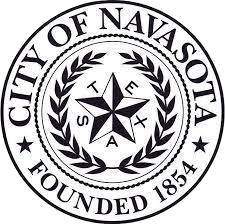
Sincerely,
 Bert Miller - mayor
Bert Miller - mayor

06 WELCOME TO NAVASOTA





119 E WASHINGTON AVE, NAVASOTA, TX (936) 825-8884 • WWW.COTTONOAKTX.COM
CONTENTS Table of MAGAZINE STAFF WILLIAM W. PRIOR III Publisher KATIE MECHAM Art Director CONTRIBUTING WRITERS SHARON BRASS CONNIE CLEMENTS RUSELL CUSHMAN MARK TAYLOR CONTRIBUTING PHOTOGRAPHERS EMILY BOONE CONNIE CLEMENTS CONTRIBUTING DESIGNERS CONNIE CLEMENTS KATIE MECHAM EXPLORE AMERICA, LLC GEORGE LANE Chariman & CEO EXPLORE MAGAZINE 281-973-0633 EXPLORE.US © Copyright 2023 - Explore America, LLC All rights reserved. No part of this publication may be reproduced without written permission from the publisher. Cover Photo: iStock.com/RAUL RODRIGUEZ Close up view of beautiful bluebonnets along a lake in the Texas Hill Country WELCOME TO NAVASOTA THE HISTORY OF NAVASOTA PECAN LAKES GOLF CLUB WASHINGTON ON THE BRAZOS LEON COLLINS: THE ARTIST & HIS MUSE A FAMILY LEGACY THRESHOLD VINEYARDS THE ART OF BEING NAVASOTAN ERGOGENESIS EATS TO BEAT & UNIQUE PLACES TO MEET JOLLISANT FARMS NAVIGATING NAVASOTA’S HISTORY DOWNTOWN & AROUND 06 14 18 22 28 32 36 40 46 48 52 54 60


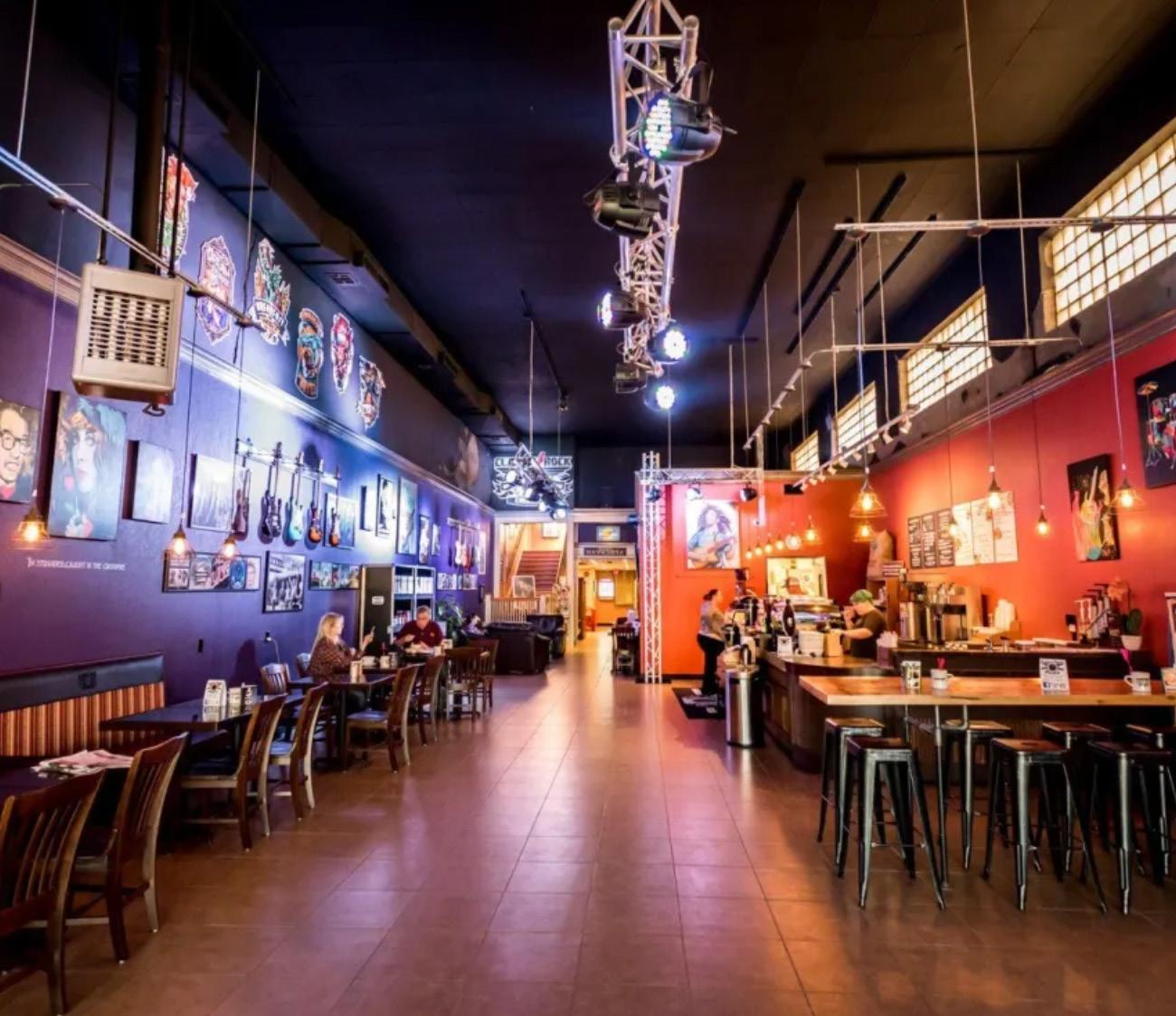




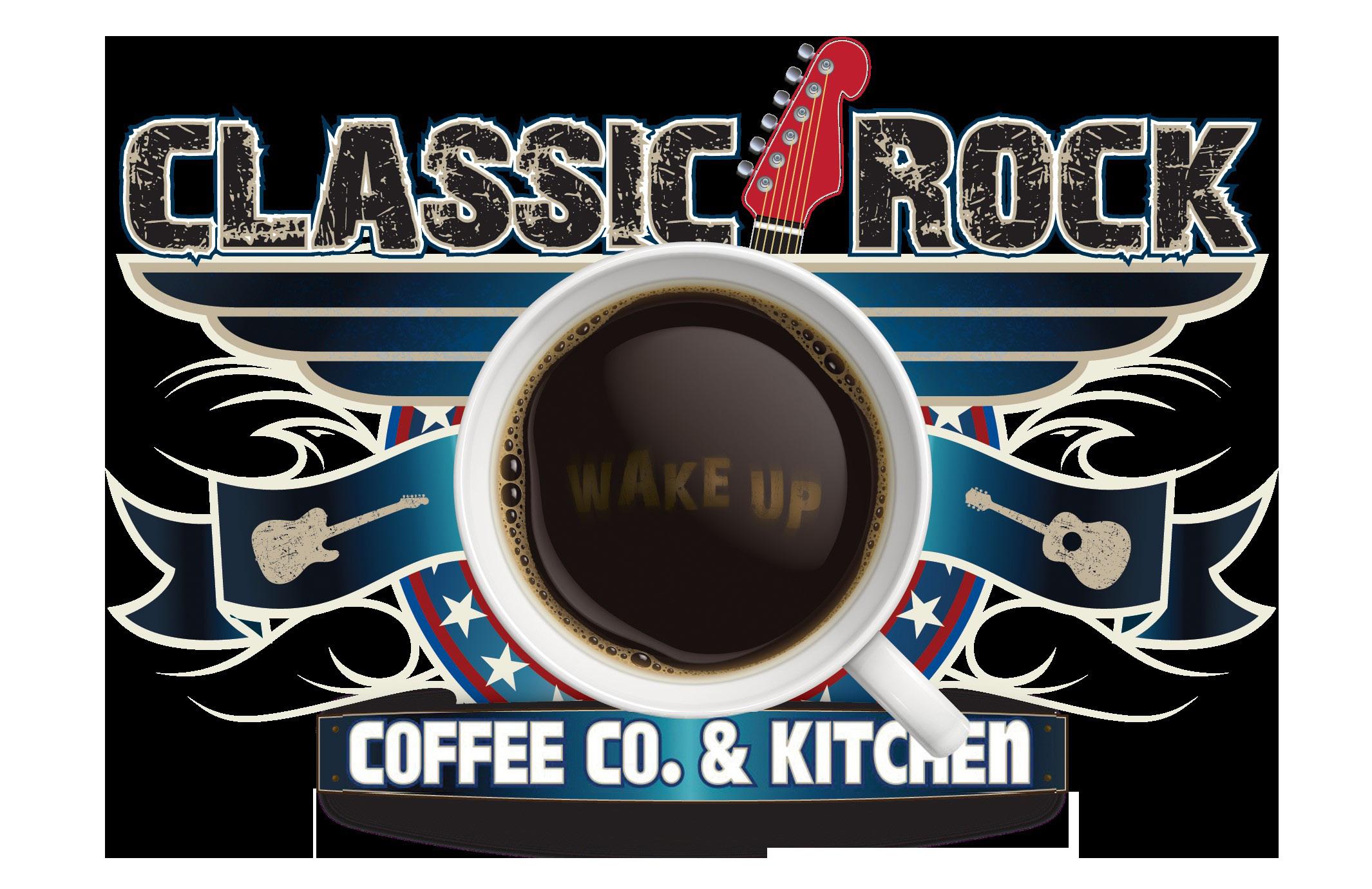
129 E. Washington Ave • Navasota, TX (936) 727-5613 • ClassicRockNavasota.com









(936) 825-6441 604 W Washington Ave • Navasota, TX • tpfinc.weebly.com
the history of
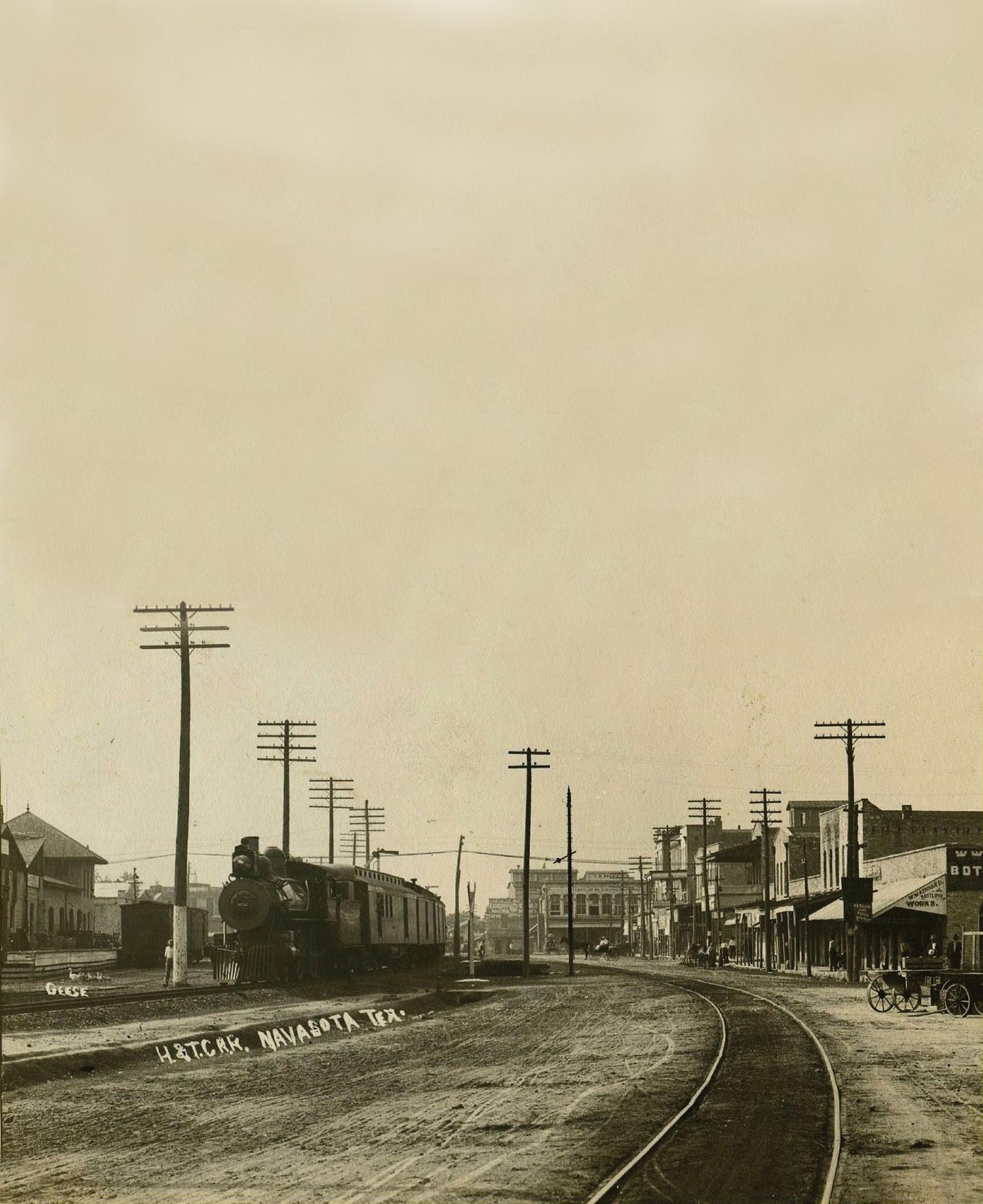 WRITTEN BY RUSSELL CUSHMAN
WRITTEN BY RUSSELL CUSHMAN
25 NAVASOTA EXPLORE.US 14 THE
OF
Photo courtesy of Russell Cushman
HISOTRY
NAVASOTA
greatest mystery of all about Navasota is the origin of its poetic sounding name. It is probably a Native American phrase. In the Yoeme dialect, a southwestern culture that once traveled and traded all over Texas, the words “nava” and “sota” easily translate into prickly pear and pot. To a Native American, a storage pot of prickly pears was the symbol of prosperity. The prickly pear was a major source of food for most of the nomadic coastal tribes who especially sought and enjoyed the prickly pear fruit known as tunas. Navasota is a good location to establish the easternmost native range of this anciently important natural resource.
Opportunity knocks
“Judge” James Nolan was the “Father of Navasota” and could have been the inspiration for many legends of the Old West, similar to Judge Roy Bean. Nolan’s little outpost on the LaBahia Trail was called Nolanville. It sat at the crossroads of a Native American hunting trail called the Coushatti Trace and the LaBahia Trail blazed by the Spanish, and the fork of Brazos and Navasota Rivers –which now rested in the path of the Houston & Texas Central Railroad. While the statesmen and captains of industry at Washington argued about the future of Texas and the pros and cons of rails, the frontiersmen across the river made schemes of their own. Suddenly Washington was out of the picture, and in another date with destiny, Nolan was sitting on the geographical hot spot of Texas. “Old Washington” as they called it, turned out to be just a caterpillar curling up in its own self-imposed cocoon while Nolan’s river bottom refuge became its butterfly.
An opportunistic innkeeper, Nolan hosted the only place within a day’s ride to find refuge in a vast wilderness where buffalo and panthers and a few Native American Indians still roamed. Judge Nolan was the self-appointed sheriff, judge and criminal justice system of his own chiefdom. An early historian of Navasota wrote that Judge Nolan had his “double log house” on the eastern edge of town where there was a blacksmith shop and a very small store. His cotton fields surrounded the town extending to the lots now occupied by the various churches on Church and Holland Streets.
An old Indian trail renamed the “Houston Road” intersected the LaBahia Trail around where Church Street dead ends into Washington Avenue. Here was the original crossroads of town – somewhere near the Navasota Medical Center – where Judge Nolan had a blacksmith patching wagon wheels and a bear on a chain to entertain customers while they waited. He took bets on wrestling matches between the bear and his customers. He had a few groceries for sale and trafficked in whatever might be traded in those times: hides, cotton, beef, tobacco, horses, slaves and especially whiskey. You could find lodging in one of his outbuildings if you were not too picky. The Judge owned a crude tavern, which was basically a flop house where all walks of life found a small uncomfortable place to sleep. Nolan’s ruffians built the town of their own dreams and that meant stores, hotels, saloons and few brothels in between.
Slowly the area became famous for prime river bottom farmland and wide-open opportunity. A tourist resort, one of the first in Texas, was established east of Navasota at Piedmont called Piedmont Springs where Sam Houston and his associates would meet, dine, dance and soak themselves in the healing natural saunas of its sulfurous springs. There was the Camp Inn and Freeman Inn, and Henry Fanthorp had built a two-story stagecoach inn in Anderson, which still entertains visitors today at Fanthorp Inn State Park.
The H&TC rails were completed in Navasota in 1859, and as the first flat cars full of celebrating passengers arrived, Judge Nolan set off the “firing of an anvil” that was supposed to send an anvil hundreds of feet into the air. Instead the thing misfired and the box exploded like a makeshift bomb. Luckily, there were no casualties.
All roads led to Navasota
The first framed residence on the main street was built by J.T. McNair who served meals for 25 cents but it inevitably became a saloon. Almost everyone else lived in tents or makeshift shelters. Soon the P.A. Smith Hotel was constructed out of native sandstone on Railroad Street. Not to be outdone, Judge Nolan built a bigger tavern out of hand-hewn timbers at the tracks. Investors built huge warehouses all along the tracks in anticipation of the big business that was to come. Right before the war, Railroad Street had become the heartbeat of Navasota with a hotel, grocer, jeweler, restaurant and various professional offices. Judge Nolan’s strip ran along Washington Avenue with a tavern, barber shop, “ten pin alley,” post office, restaurant and other necessities. The stagecoach came from Huntsville and Anderson every day as all roads led to this major crossroads of Texas.
26 EXPLORE.US 15
Soon many train cars loaded with supplies and general merchandise began to arrive in Navasota, and for a short time Navasota provided everything to most of central Texas. Ox-drawn wagons came from all directions carrying fresh hides, bales of cotton, grain, wool, meat and lumber to be processed and crated and shipped to Galveston.
Dr. Kilpatrick, an early doctor and historian, noted that with such plentitude came the greedy and predators… “In those days, where there assembled such crowds of men, many of whom were rough, passionate and full of wickedness, there were many scenes of crime and lawlessness.”
Of course, there was a large stable of doctors to patch them up and even more lawyers to keep them out of jail.
Ravages of war
Then came the Civil War and all of the progress in townbuilding halted. Still, telegraph lines were erected in 1862, probably as a military necessity. During the Civil War, D. Smith produced barrels for the war effort and organized the local ladies in sewing uniforms for the soldiers. While a Confederate camp guarded the railhead 10 miles north of Navasota at Millican, cotton bales from the Brazos Valley littered the streets awaiting shipment. Arms were produced in Anderson and sent to Galveston. And as Navasota became a relay and storage facility for the Confederacy, a great deal of military supplies were stored in local warehouses. So it was the presence of the railroad that spelled imminent disaster for the town in its infancy.
At the end of the war, hundreds of wandering and homeless Confederate veterans congregated at Navasota, the proverbial “end of the line.” General Custer was brought in with troops and stationed in Hempstead to keep the peace. When the scavenging soldiers discovered the Navasota warehouses packed with war provisions, clothing, weapons and gunpowder, and they had just lost the war due to the lack of these things, they began to look upon those warehouses with suspicion and contempt. There has never been a good explanation for how it happened, but somehow Parker Smith’s warehouse, which was loaded to the gills with gunpowder, was set on fire and exploded in 1865. Cotton, grapeshot and bundles of bayonets went in every direction and half of the downtown business district was burned to the ground. While other towns in Texas had escaped the ravages of the war, Navasota felt it full force and found herself starting almost from scratch.
Navasota endures
The town chose to rebuild and officially incorporated in 1866. Yet there were more terrible fires – significant town fires in 1868, two in 1869 and then again a serious holocaust in 1873. Each time the town licked its wounds and built on top of the ruins. There was an occasional loss of life but nothing compared to the yellow fever epidemic in 1867.

Still rebuilding after the disastrous fire in 1865, Navasota was struck with a deadly outbreak of yellow fever, providing its worst setback ever. It began with the shock of 15 deaths in August of that year. Two-thirds of the approximate population of 3,000 evacuated, including the public leaders and the mayor. Of those that remained, 20 percent died. All that remained were the sick and dying and those caring for them. In September, 119 perished. Strangely, the African American residents seemed to be immune. In October, another 39 fell to the disease. By November it was finally over but such a mysterious and deadly plague had sent the healthy population in all directions. The death toll was easily over 200 and still Navasota endured. The people returned. And new people filled in where others had fled.
 Ferry crossing the Navasota River
Photo courtesy of Russell Cushman
Ferry crossing the Navasota River
Photo courtesy of Russell Cushman
27 NAVASOTA EXPLORE.US THE HISTORY OF NAVASOTA 16
Photo courtesy of Russell Cushman


211 East Washington Avenue • Navasota, TX MclainMediationServices.com


EXPLORE.US 18 PECAN LAKES GOLF CLUB


EXPLORE.US 19
DISCOVER PLACES TO LIVE, WORK, AND PLAY
EXCLUSIVE LUXURY PROPERTIES


AMERICA’S FARMS AND RANCHES
ENGAGING & IMPACTFUL TARGETING OF YOUR MESSAGE

MESSAGING & CONTENT WIDELY DISTRIBUTED E xplore A merica M edia.com ExploreTexasRadio.com


117 E WASHINGTON AVE, NAVASOTA, TX (936) 825-2223 WWW.PARIS PINK COWBOY BLUE .COM
Where Texas Became Texas
Written By SHARON BRASS
What was once one of Texas’s most important cities is now a tiny dot on the map – one that you won’t want to miss.
The dot representing Washington, texas, on the west side of the Brazos river, is so small on today’s maps that GPS devices have a hard time locating it.
It’s difficult to imagine that Washington was a booming business center in early history. On 19th-century maps the “Washington” dot was one of the largest in texas.

Washington began forming in 1821 when Texas was still a Province of Mexico. It was to this part of Texas that Stephen F. Austin brought the first 300 American settlers, known as the “Old 300.”
A group of these settlers traveled up the Brazos River from the Gulf of Mexico and landed on the west bank, where the river intersects La Bahia Road. The centuries-old La Bahia trail had previously been used only by Indians and early explorers from France and Spain. Now it was the primary route being used by the Old 300.
The American settlers threw-up tents on this strategic site and named their encampment “La Bahia.” Andrew Robinson, one of the first residents, quickly established a ferry to help La Bahia travelers cross the Brazos. Within three years he had built lodging accommodations including a place of “entertainment” at the ferry landing.

Washington On The Brazos
EXPLORE.US 22 WASHINGTON ON THE BRAZOS
Texas in early 1836, a Province of Mexico .
Robinson’s son-in-law, John W. Hall, was also among the Old 300. The Halls joined Robinson in operating the ferry and other businesses, and they quickly recognized the commercial possibilities of La Bahia.
In June, 1835, Hall organized the first town association with four others. One of the partners was Asa Hoxey from Washington, Georgia, and he suggested renaming the town for his home town. “La Bahia” became “Washington” and some settlers added “on the Brazos” to differentiate it from the “Washingtons” back in the States.
the Washington town Association arranged for land, along the Brazos, to be surveyed into a town site. The lots sold quickly and by 1835 Washington was filling with saloons, merchants, doctors, lawyers, black smiths and carpenters.

The business men in Washington were ambitious and, in the fall of 1835, they offered the Texas Constitutional
In 1836 the cities of Washington and san
Felipe de
a
ustin
were the only population centers in a ustin’s Colony, a large part of Texas.
Convention a free meeting place in their city. The Convention had met earlier at San Felipe de Austin, the Texas Capital further south on the Brazos. They planned their fight for freedom against Mexico’s oppressive rule and recent attacks. They also debated the security of their position in San Felipe, with Santa Anna’s troops in the area.
the offer of a safer meeting place, with access to the Brazos as an escape route, was too good to refuse. In December of 1835 Washington was chosen as the site for The Convention’s March meeting. The delegates were elected in February of 1836 and they met on the first day of March in Washington, making it the Texas capital by default.
the accommodations were no comparison to those enjoyed by the men who had declared independence from England just a few decades earlier. At Washingtonon-the Brazos the meeting place was an unfinished building without doors or windows. The window
EXPLORE.US
March 1836 diary entry while at the Constitutional Convention

openings had been covered with cloth, but that was no protection from the 33º temperature.
Living accommodations for the delegates were a little better, but not much. The youthful town then contained only one house large enough to accommodate this body of distinguished men. William Fairfax Gray, an observer at the Convention, noted in his diary that he stayed at a house in which “the host’s wife and children and about thirty lodgers all slept in the same apartment, some in beds, some on cots, but the greatest part on the floor.”
The food was equally primitive. Gray wrote, “Supper consisted of fried pork and coarse cornbread, and miserable coffee.” He concluded that “Washington is a rare place to hold a national convention in. they will have to leave it promptly to avoid starvation.”
That was life in the capital city of Texas. However, that was life in most of texas at the time. the delegates wasted no time crafting the texas Declaration of Independence from Mexico and the Texas Constitution, giving birth to a new nation, The Republic of Texas.
After Sam Houston defeated Santa Anna at San Jacinto a few weeks later, peace was quickly restored in the colonies. Washington continued to grow and thrive. One of the major growth stimulants was river boat traffic which brought many settlers and supplies, and enabled local products to be sold downriver at the Gulf of Mexico and beyond.
The market for the burgeoning cotton crop in Washington County was the cloth-weaving industry on the U.S. east coast and Europe. Ocean-going vessels were the easiest, fastest, and cheapest way to feed that market.

WASHINGTON WA S :
Did you know?
• One of Texas’ first Anglo settlements.
• One of Texas’ first important economic centers.
• One of Texas’ first transportation hubs.
• Texas’ first inland sea port.
• A two-time capital of Texas.
• The inauguration site of the first and last presidents of the Texas Republic.
• The place where Texans risked their lives to write the Declaration of Independence from Mexico and the Texas Constitution, giving birth to a new nation – the Republic of Texas.
At times, one could see as many as three river boats docked at the Washington landing. In 1842, the arrival of the Mustang marked a milestone for local cotton growers. The flat-bottomed steamer was the vanguard of river boats with capacity for 300 bales of cotton.
The year 1842 was fateful for Washington in another way. in March of that year, Mexican troops again entered Texas and occupied San Antonio for a short time. Austin, then the Texas capital, was on the edge of the frontier and its primitive log cabins were vulnerable to Mexican attacks. The government was relocated to Houston for a short time, causing a dispute among Texas citizens. Under pressure, President Sam Houston moved the Texas capital back to Washington.
Accommodations for the government in Washington were little better than those described in Gray’s diary six years earlier. The Senate met in the attic above a saloon until the government was moved back to Austin in 1844.
By 1845 Washington was a bustling, growing commercial center. In addition to Brazos and La Bahia Road traffic, there were several popular stage coach lines to
?
“Washington is a rare place to hold a national convention in. They will have to leave it promptly to avoid starvation.”
- William Fairfax Gray -
24
WASHINGTON ON THE BRAZOS
Brenham, Independence, Chappell Hill and Austin. The city was home to three newspapers and a Masonic Lodge.
During the next decade the town’s population grew to 750 residents, the height of its heyday. This population supported four churches, the Washington Female Academy, two hotels, and two Odd Fellows chapters. By this time there was a commercial section of Washington with brick buildings of two and three stories.
The robust river trade prompted the creation of the Brazos Steamship Association in 1848. Although the Association’s prime purpose was to improve navigation on the Brazos, it also bought two steamboats, the Washington and the Brazos
However, the flourishing river commerce, the life-blood of Washington, proved in the end to also become its death knell. The community had centered its economy around the Brazos, and was heavily invested in the ferry and river boat operations.
By 1875, a mere decade after Emancipation, Washington’s population was estimated to be only 175 people. Buildings were abandoned and weeds grew in the streets. A 1912 fire destroyed most of the remaining structures.
In 1858 the Houston and Texas Central Railroad Company (H&TC) offered to include Washington in their plan for new tracks, to connect to the main line from Galveston and Houston. Washington officials refused to pay $11,000 for this rail branch, not realizing that it would be a fatal decision for the city.
As a result, Washington was bypassed by the railroad and Brenham became the H&TC western terminus. Texas’ economy shifted, and Brenham quickly became the most important center in the state for transportation, communications and commerce.
Almost simultaneously with the 1861 arrival of the railroad in Brenham, Texas joined the Confederate States of America. The ensuing Union blockade in the Gulf of Mexico put an end to cotton traffic on the Brazos, and Washington further faded as a commercial center.
Then came Emancipation on June 19, 1865, when slaves in the Southern states were freed. Many slaves lived on cotton plantations surrounding Washington, and their freedom brought failed crops and economic devastation for local plantation owners.
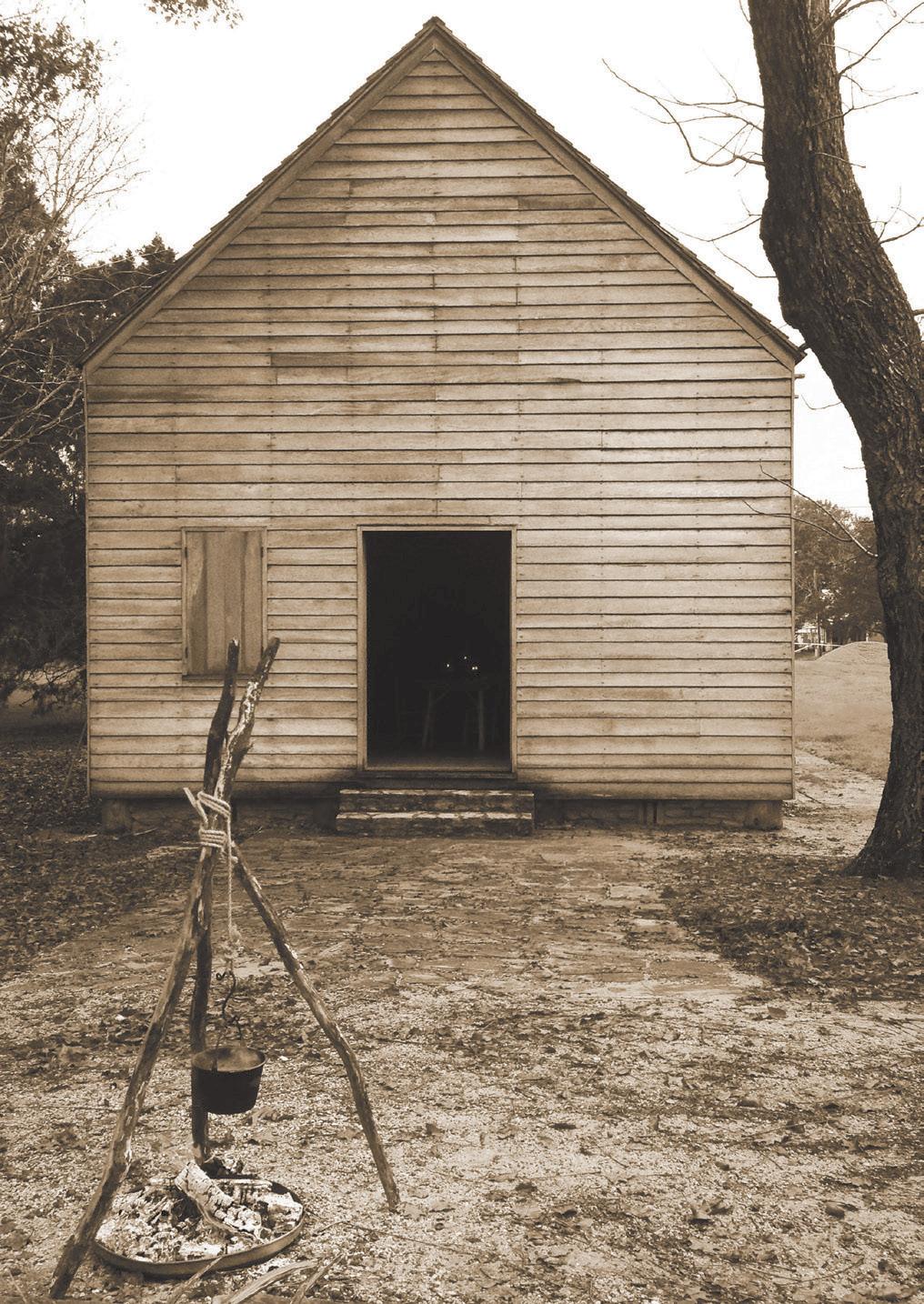

However, there are plenty of artifacts, exhibits and 19thcentury adventures to be found at Washington On The Brazos State Historic Site. Visitors can see how our hardy forefathers lived, and learn how they risked their lives for our freedoms.
So set your GPS and see if you can find that “Washington” dot. When you get there, you will relish the heroic stories, and you’ll be even more proud or your Texas heritage. D
Special thanks to Washington On The Brazos State Historic Site for their help with this story.
When offered an opportunity to participate in railroads, city fathers lacked the foresight to safeguard their future .
Today, it is difficult to find any trace of the original city of Washington, Texas .
EXPLORE.US 25
Photo courtesy of Washington On The Brazos State Historic Site
Established in 1921 by the Episcopal Diocese of Texas, Camp Allen was created with a mission to provide Christian hospitality to the community at large. Camp Allen offers a hotel and conference center, dormitory campsites, and lakeside cabins for booking. Our campus features 2 beautiful lakes, miles of hiking trails, a landscaped park, 3 pools, a pavilion and playground, high/low ropes courses, and animal encounters such as horseback riding and a barnyard viewing experience.
During the summer months, Camp Allen offers our premier summer camp experience for youth, 3rd through 10th grade. We believe that the power of the gospel message and outdoor adventure can transform young lives. This is why we offer a diverse range of activities designed to enrich and challenge campers to grow physically and spiritually. Our campers leave Camp Allen with a sense of accomplishment and an invigorated sense of self-confidence.
Whether staying with us for summer camp or any other event, Camp Allen strives to be a safe, welcoming, and inclusive community where everyone feels valued and respected.


Camp Allen has facilities to host individual guests, small groups and large groups. For booking or to take part in one of our free Familiarization Tours, contact our reservations department at 936-825-7175. For more information, please view our website at campallen.org



18800 FM 362 • NAVASOTA, TX • (936) 825-7175 • www.c AM pA lle N . O rg
Located on 1,100 acres of natural green forest, Camp Allen provides a soul-nourishing stage on which to host a variety of events such as corporate retreats, social gatherings, spiritual activities, and educational endeavors.


101 Railroad St, Navasota, TX (936) 227-4400 railandrye.com
WRITTEN BY CONNIE CLEMENTS PHOTOGRAPHY BY CONNIE CLEMENTS
uch has been written about Navasota’s local street artist Leon Collins. To be honest, I don’t know that I can add much more. But what I can tell you that you might not know is that he is 54 years old and he is Leon “the third,” named after his daddy, and his daddy’s daddy. Leon is a fixture on Washington Avenue –the main drag of downtown Navasota – usually found at Tejas Antiques or Blues Alley, sometimes painting and sometimes just sitting and watching the world around him.
Leon was in a sitting mood when we talked. It was a hot Sunday afternoon but I wasn’t about to suggest we go into the air conditioning when I could sit with him in his element. Sitting on the bench in front of Blues Alley, feeling the summer heat, taking in the sounds of traffic and trains, and listening to Leon’s slow, deep voice, I was feeling life in a way that you just can’t experience under fluorescent lighting and in an air-conditioned space.

28 EXPLORE.US LEON COLLINS 28
Leon described his life through a series of vignettes. While the circumstances varied in place and time, their common thread was “Big Mama,” Leon’s great-grandmother on his mother’s side. After several forays into painting in California in 1971 and again in Navasota in 1992, Leon finally found his muse and inspiration painting what was closest to his heart. If Leon is the man behind the painting, Big Mama is the woman behind the man.
“I used to love to write stories so I would write down everything she told me about her life and what went on with me living with her and my greatgrandfather. I compiled about 9,000 pages of Big Chief tablet stories. One day I decided to start putting those stories to life through my painting. That’s what really brought it on,” shared Leon.
When asked if he has ever refused to sell a painting, he said he hadn’t. “I never have refused because of one factor – I haven’t finished my book yet. I mean to take all those stories and put them into paintings where it will be a multitude of paintings that tell the complete story from beginning to end.”

Leon calls living with Big Mama the closest to Heaven he will ever be. He recalled a time as a teenager when he left California to come back to Big Mama.
“I got to Brazoria and the bus station, stopped and got me an RC soda. I’ll never forget it…an RC soda and three packs of cigarettes. I ducked in the woods and looked like lightening I was movin’ so fast. I guess it was about mid-December. It was pretty cold. I had a wool sweater on and blue jeans but I could smell that old wood in the air. Now, you keep in yo’ mind that everybody back there in them woods had wood heaters and they was all burning at the same time but I could smell the wood that was burning in Big Mama’s old heater. I know where it be coming from. I crossed that old ditch, and Lord have mercy that was Heaven! Close as I thought I’d ever be. If I never made it to Heaven, that was close enough for me.”
Leon continued, “I could see her a mile away with that old green apron on and she could see me. When I got closer, she said ‘What you doin’ here? I thought you was going to stay in California and graduate and make something out of yo’ self.’ I said ‘Big Mama, I made something out of myself the first time you put your arms around me and said I love you.’”
Recovering from clearly an emotional moment, Leon said, “She always told me to do good toward other people because that’s for them. ‘You don’t worry about nobody liking you. You picture in your heart why you like them,’ she would say.”
A tragic event in Leon’s life was the death of his younger brother. “My brother died and that was my world, too. Georgie died at 11 years old trying to stop our neighbors from fighting with butcher knives in the backyard” - in a fight that spilled over to Big Mama’s.
“We had a great big 100-year-old dropwell made out of them big boulders. We heard a commotion and they was fighting. Georgie ran out there trying to separate them. He slipped, fell into that well, and was dead before he hit the water. Big Mama took a chain and put it around my waist and lowered me down into that well to pull his body out. That was the most tragic time in my life.”
Sadly, Leon experienced another tragedy recently when a house fire destroyed everything he owned. “Unfortunately, when my house burned down, I lost all of my stories. Now it’s painstaking to go back in my mind and remember everything and write down everything, and that is what I’m starting to do all over again. That happens. It’s called life.”
The attraction to Leon’s primitive, vibrant artwork inspired by words in a Big Chief tablet has spread far beyond the confines of Navasota’s Blues Alley. Collectors can be found in New York, Rhode Island, New England, California and New Mexico, and includes a top executive for a South Africa international oil and gas company.
So what exactly does Leon contemplate sitting on the bench? “Most of the time I be thinking about past time, past life and enjoyment that I had during my life, and most of all being thankful that God is letting me be here today. Worrying about stuff adds not another day to my life. Every day of my life is the very best day I ever had.”
29 NAVASOTA EXPLORE.US 29







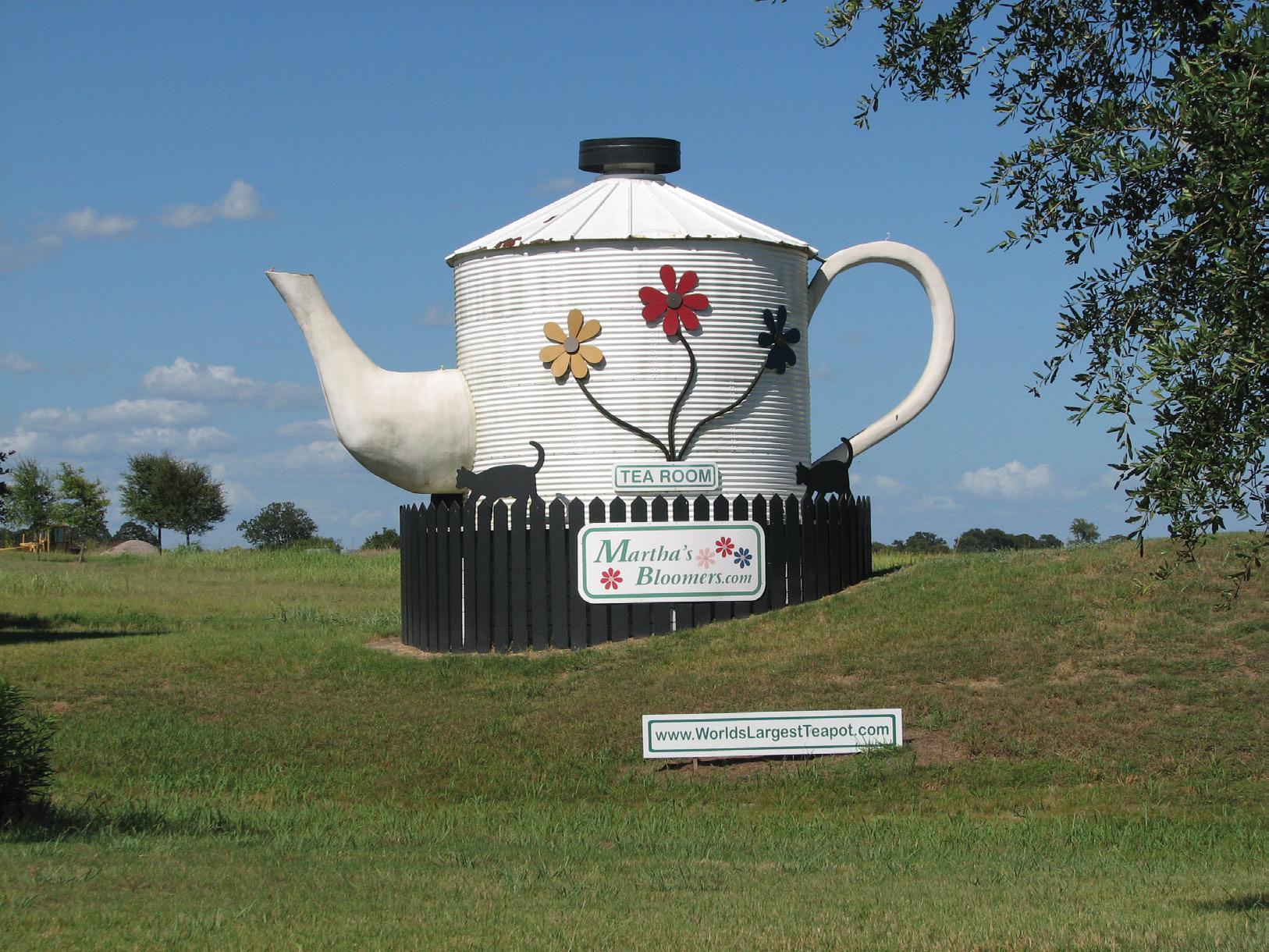



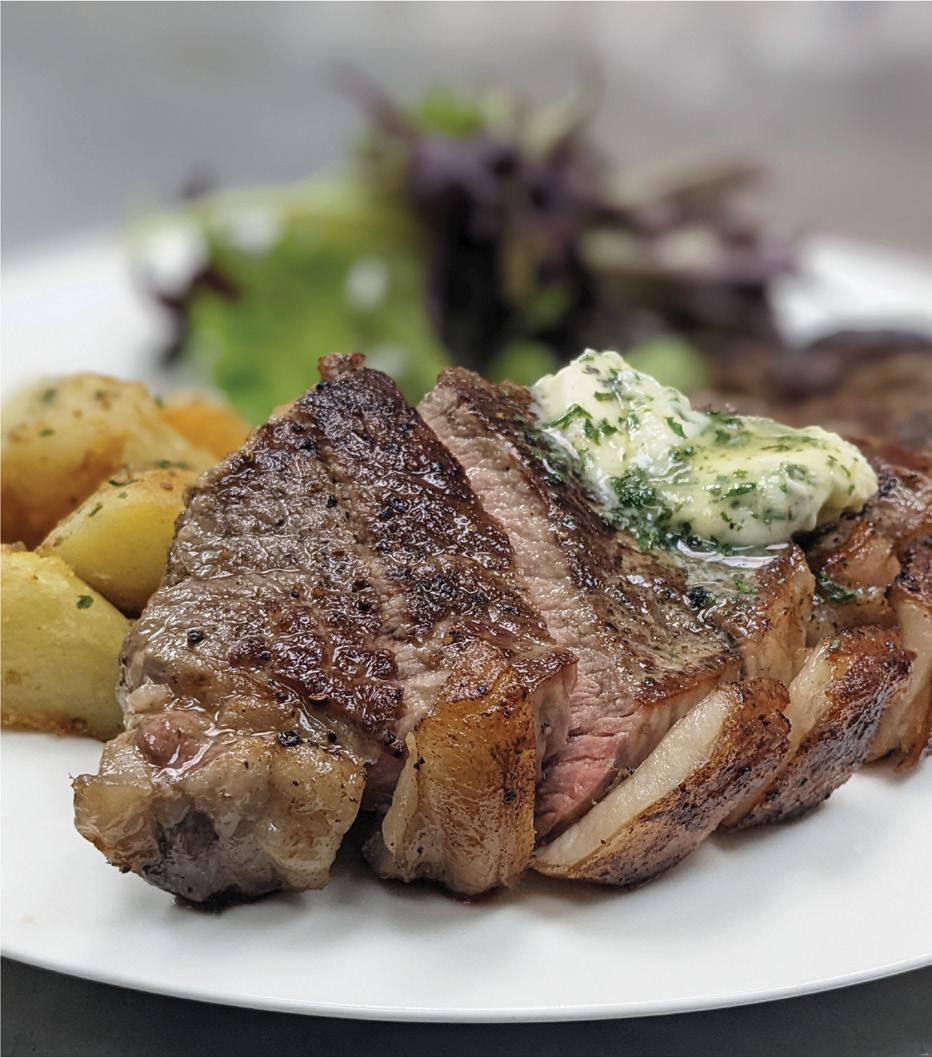
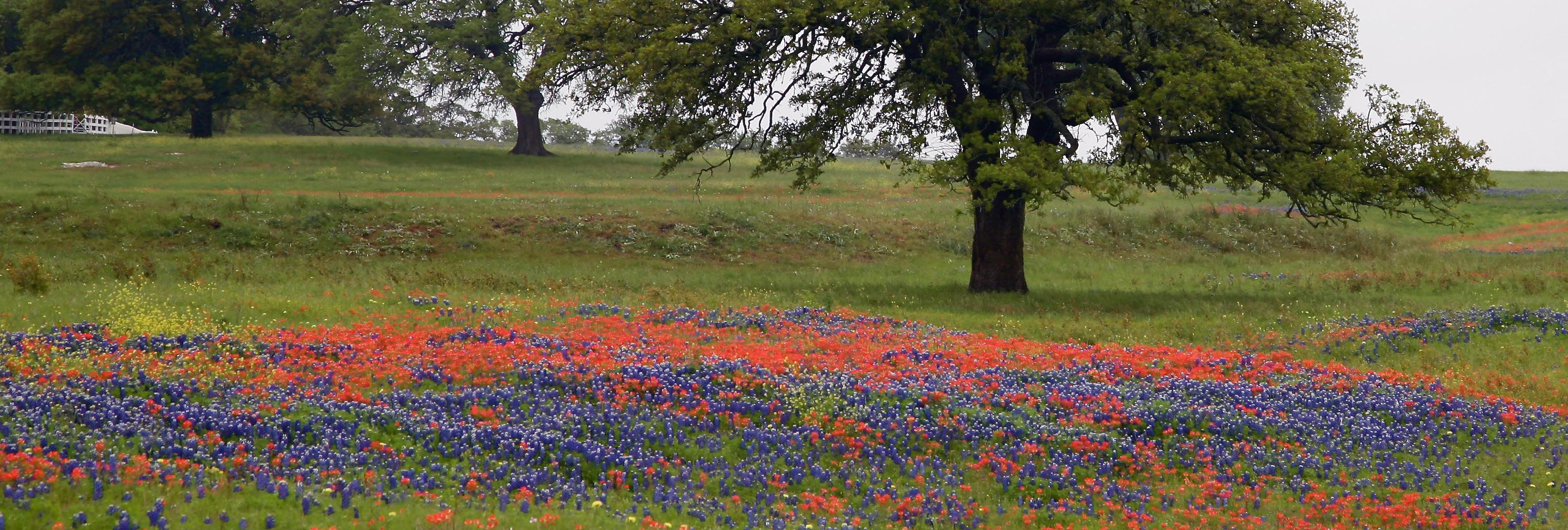


310 W. Washington – Navasota, TX 936-825-3356 BAYLORLUMBER.COM Full Service Lumber Yard • One Stop Building Center
WRITTEN BY CONNIE CLEMENTS
PHOTOGRAPHY BY CONNIE CLEMENTS
rmed with college degrees and the optimism of youth, many small town sons and daughters leave their rural life for the bright lights of the big city to blaze new trails. However, for three Navasota siblings, Josh, Jennifer and Jon C. Fultz, the desire to stay in Navasota far exceeded their desire to leave. Why did they come back? Why do they feel such a strong need to give back to the community? For them, there really is no place like home.


Navasota’s newly elected city councilman, a 1996 graduate of Navasota High School and Sam Houston State University alumni may have physically left Navasota for a while but his heart never did. Josh explained that after his parent’s divorce at age 4, his weekdays were spent with his mother in Conroe where “I was one in 70,000!”
Serving where the heart is
He described it as a place of anonymity where you went to the movies, to the grocery store and “nobody has a clue who you are.”
His weekends in Navasota with his father were a different story.
“When I came to Navasota on the weekends…I saw everybody that I knew and that’s not even really getting out. On a trip to Wal-Mart, you see a lot of people. A lot of people went to school with my parents, knew my grandparents, know all my cousins. There is something comforting in that. That is what keeps me wanting to be here.”
Josh is also the father of 9-year old Jadyn who was diagnosed with Charge Syndrome, an extremely complex syndrome involving extensive medical and physical difficulties that differ from child to child. The comfort Josh found growing up in Navasota now extends to his daughter.
Navasota siblings Jennifer, Josh and Jon C. Fultz on the stairwell of their grandparents former home now the office of Fultz and Fultz, Attorneys at Law.
EXPLORE.US 32
The former home of Artie Fultz Davis.
“Now with my daughter I feel like I have the whole town as my cheering squad. Any time I put Jadyn on Facebook, people say, they can’t believe she’s doing that. Although I left to go to college in Huntsville, I’ve just not really thought of being anywhere else but here.”
he became the youngest NTA president. Josh has been an active supporter of the Navasota Blues Fest, is a Mason and currently the vice president of Texas Chargers, a support group for parents of children with Charge Syndrome. His “servant’s heart” and his philosophy that “everybody has feelings and you don’t know what their shoes are like until you get in them, and there is no way to get in them so there is no way to know” has prepared him to be an adviser and encourager to new parents coming into the Texas Chargers “family.” Reflecting on those first few days and weeks of Jadyn’s life, Josh said, “It wasn’t until about three or four weeks being there (at Texas Children’s Hospital) that we finally saw a doctor who said ‘congratulations on your new baby.’ It’s a much different experience with a newborn so every time a new family comes to our organization, the first thing I tell them is ‘congratulations’ because I know they don’t hear it.”
The seeds of service to others were sown by his parents, John M. Fultz and Patti Sexton, as well as his grandmother, Artie Fultz Davis.
Josh said, “I come from a very different background with my father being an attorney and my mother being a single mother. I was shown two lifestyles – one less concerned with money and one that was pinching pennies. That combination is what makes me who I am. My mom has always taught me to serve others and be a servant. She worked for the Montgomery County Women’s Center and had us work with her and give out food during Christmas, really helping spiritually, while my dad was always helping folks with legal issues. Both of those things are what gave me insight on how to connect well with different people.”
Of his grandmother Artie Fultz Davis, Navasota’s first female mayor and the only female county attorney in Grimes County, Josh says she was gentle, treated everyone with respect and “tried to instill into us grace.”

“I’d say that having a servant’s heart and unconditional love are the things that I keep with me when I’m working or dealing with people.”
Josh’s advice to people floundering in life is to “get out and become involved.”
Josh said, “I would encourage folks who feel the community is not reaching out to them to reach out to the community. Get involved with something - theater alliance, the schools, the library - you get so much more back when you’re giving to other people. To me, community service is important because your community is only as good as the people that serve it. Giving back gives you a sense of ownership. That is the fulfillment that I get – as much as I put into it, I get out of it.”
After graduating from Navasota High School in 1999 and Cum Laude from Texas A&M University in 2003 with a BBA in Management, Jennifer Fultz’s life working for a nonprofit in the Dallas area would only be temporary. The soft-spoken but purposeful young attorney said, “I was not a big city girl. There was no sense of community. I always knew I wanted something like Navasota where I could plant my roots.”
She continued, “This community has been home to me and it was where I wanted to be long term, partly because my family is here and partly because I like the feeling of going into Brookshire Brothers and seeing people I know.”
As a 10-year-old boy, Josh was often seen riding his bicycle through the neighborhood to volunteer at the Navasota Theater Alliance (NTA). Later, at age 17,
Jennifer‘s heart was in serving a nonprofit but when her grandmother Artie Fultz Davis died, she decided to study law and discovered the affinity for the law her grandmother had foreseen. The family home of her grandmother now serves as the law office of Fultz & Fultz Attorneys at Law, and Jennifer treasures the unique opportunity to practice her craft in the room that once belonged to her aunt, Bonnie Fultz Armstrong. Her brother Jon offices in their father, John M. Fultz’s childhood bedroom, and their father’s office was formerly his parent’s bedroom.
35 NAVASOTA EXPLORE.US 33
Josh Fultz being sworn in as Navasota’s newest city council member
Jennifer is on the board of the Navasota ISD Education Foundation and serves on the City of Navasota’s Economic Development Committee. However, “with a heart for Navasota ISD” she and friends Melissa Fogarty, Sarah Korpita and Martha Russell asked themselves what they could do to make a difference in the Navasota community, but specifically in the Navasota Independent School District (NISD).
The four friends formed the nonprofit, For the Love of Grimes County, and embarked on a literacy campaign supporting NISD’s Read 20 program that fosters an awareness of the importance of reading and encourages adults to read to, or with, a child 20 minutes each day.
For the Love of Grimes County also sought to simplify the school volunteer process by assisting school administrators in pairing willing volunteers with volunteer opportunities.
Since formation, the organization has hosted two successful STEM Nights (Science, Technology, Engineering and Mathematics) that have brought children and parents together with local business leaders, Texas A&M University students and a host of volunteers for a fun and unique way of learning about those subjects.
Jennifer’s advice to students and their families is that education is the key and needs to be a priority made by families from generation to generation.
Jennifer is visibly moved when talking about the determination of their grandmother who grew up picking cotton in Iola but wanted more for her family. In 1928, 20-year-old Artie Fultz Davis became the youngest woman to ever pass the Texas State Bar exam - without formal law school training.


Jennifer said of her grandmother, “She changed the course of our family. She is the example of drive and determination that made a difference for herself and us. The example was ‘you can do whatever you want to do.’ When you grow up with that expectation there is no limit to what you can do.”
Reflecting on the family’s legacy of service, Jennifer said, “There are people who are less fortunate and need someone to stand up on their behalf. What I’ve been taught from our family is - that is who we are. We fight for those who can’t fight for themselves. We’re not alone here. We’re part of this place and we’re charged with making it a better place.”
Maybe that was the expectation for us - that we would be part of the growth and life of the community.”
Jennifer believes everyone benefits from being held to expectations. On children and education, she said, “If we believe that good enough is good enough, that is the message they are receiving.”
For local businesses this means a clean, customer-friendly atmosphere with competitive prices. For residents, it’s taking pride in their neighborhoods.
”If we look at every aspect of our community and we say more is required, and that is what we’re asking, I think it is what people will give. It requires us to say we want more from our leadership who then wants more from their staff who provides more to the community.”
A career in law was not a foregone conclusion for this 1990 Navasota High School graduate. That kinship was felt six years later after graduation from Texas A&M University when “Jon C.,” as he is called, said he “came of age” at South Texas College of Law in Houston. Now a partner at Fultz and Fultz Attorneys at Law and current Grimes County Attorney, Jon says, “In my final days at South Texas I realized that I had a gift that had been given to me by my grandparents who started this firm in the 1930s. Our firm was always one that wanted to help the little guy.”
Jon continued, “When a case comes in here, my heart is thinking I want to solve your problem. If I can get it done in five minutes and you pay nothing, I want to do that. I recognized that about this firm, about how my grandmother had worked so hard for this community for so long and just enjoyed being a member of the community. Navasota has always been a neat place to me.”
Artie Fultz Davis Houston Chronicle November 12, 1980
36 EXPLORE.US 34 A FAMILY LEGACY
Attorney Jennifer Fultz enjoys the family scrapbook celebrating the accomplishments of her grandmother Artie Fultz Davis.
Honesty and helping others are just two of the values Jon learned from his family.
“Knowing our practice had been one that helped people, where you’d take chickens as payment or you take payment plans, or sometimes you are OK with not getting paid - it’s heartwarming to help those people who are appreciative,” he explained.
Jon acknowledges that it is still a business. “You’ve got to pay the bills but it gives you an opportunity to be able to help folks who really need the help.” Has this humanitarianism balanced out? According to Jon, it certainly has.
“Absolutely! I’m able to take care of my family and pay the bills we have. I live a modest life,” referring to his 1996 pickup truck with 240,000-plus miles. “It’s very rewarding. Yes, it balances out.”
Sixty percent of Jon’s liver was transplanted at the Mayo Clinic and his remaining 40 percent regenerated itself. He said, “That was operation No. 60 (performed by the Mayo Clinic) and there have been over 200 now with a pretty good success rate and no fatalities. It seems to me there really wasn’t a choice.”
Jon is a former president of the Navasota ISD Education Foundation and a Mason, but he may be remembered most for his decision to donate part of his liver in 2007.
“I had a friend beginning to suffer the ill effects of a liver disorder. It wasn’t hepatitis or cirrhosis. It was idiopathic but his liver was failing. If you had a friend who was dying and you could do something about it, it’s a no-brainer. You just do it,” shared Jon.
Jon’s familial ties to the Grimes County attorney’s office are visible in photos in the hallway and in the archives at the Grimes County courthouse in Anderson, Texas. His grandfather, Joseph D. Fultz, was elected in 1941 and 1957. His grandmother, Artie Fultz Davis, twice completed Joe’s terms of office – once when he left during the 1940s war years and again when he died in 1964. On maintaining the boundaries as county attorney and his private practice, Jon said, “The county is my priority, but knowing that I could help my father keep the doors open on a firm that was started in the 1930s is something I wanted to do. I can offer folks assistance in a way that’s totally different from what I do at the county. Never is it a question of do I reduce the amount of effort that I give the county. It is always a question of how do I limit what is done here.”
Despite frustration with the “organizational structure our framers gave us,” Jon said serving as county attorney has opened his eyes to “what counties look like, the deficiencies of the law when it comes to counties, how hamstrung they are.”

As elected officials, Jon stated, “It’s certainly important that we all be willing to be reasonable, be willing to listen and at least consider what other folks have to say. That we see in their eyes our own humanity, and that we try to determine what is best for the people who put us in the position - what is best for the little segment of humanity that is Grimes County and Navasota.”
Jon strives to instill in his children the same values his parents and grandparents instilled in him. He tells his two children, “Show up early, stay late, have a happy face on, do the right things, take care of people and don’t be consumed with the burden work is to you but with the opportunity to engage with other people and it will work out.”
For those struggling to succeed, he advises, “Develop a sense of ownership in what you do, become invested and understand the gravity of being the face of the business.”
According to Jon, “If you find something you are passionate about and at the same time you can take care of other people, you can’t go wrong.”
37 NAVASOTA EXPLORE.US 35
THE HISTORY OF The Jeter Family


36 THRESHOLD VINEYARDS EXPLORE.US
Great wine starts in the vineyard!
This adage in the wine world rings especially true, as the Jeter Family’s emergence into the wine industry was as wine growers, producing the highest quality fruit as possible – they are wine growers first and foremost.
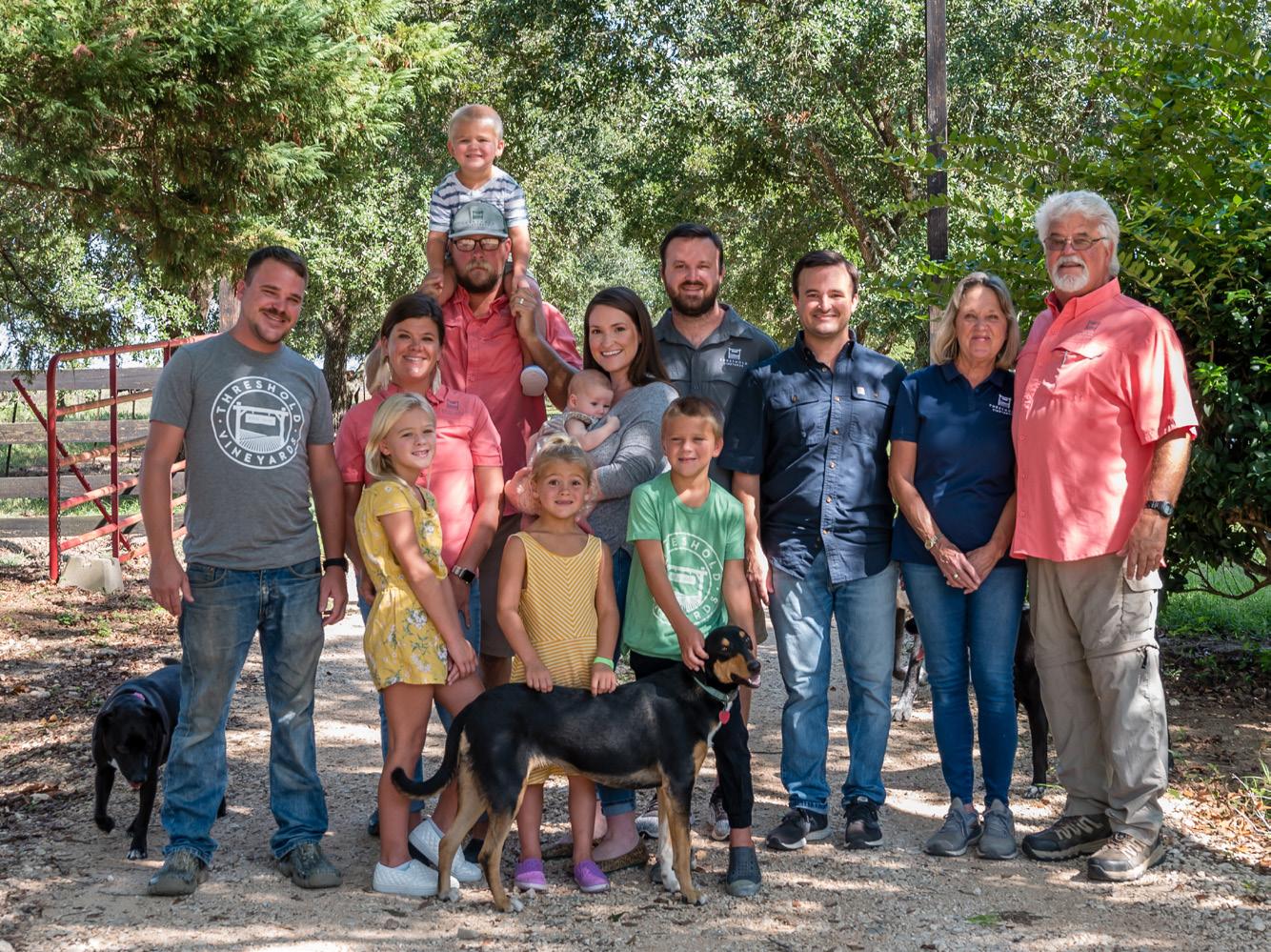


Threshold Vineyards is a family-owned vineyard and winery located in the Brazos Valley, three miles east of the Brazos River and south of Navasota. Owned and operated by Kimbrough and Dr. Betsy Jeter along with their four children, Threshold’s estate vineyard carries on a long family tradition of farming Texas soils. The Jeter Family settled in Texas 1846 when the Reverend Melvin Jeter and his brother Reverend George Washington Jeter traveled with their families from Alabama to Panola County, Texas to spread the Word and farm the land. On Betsy’s side, the Couch Family began farming in Hill County, Texas in 1880. Kimbrough and Betsy’s grandbabies are now sixth generation native Texans.
The seed for starting a vineyard and winery was planted in 1982 when Dr. J and Kimbrough visited Napa Valley wine country in California after her graduation from the Texas A&M College of Veterinary Medicine. They toured the wineries and vineyards and returned to Texas inspired. In 1989, Kimbrough and Betsy purchased 102 acres of land in southern Grimes County, the presentday location of their vineyard and winery. At the time of purchase, the property was a nursery and Christmas tree farm, with over 25,000 Virginia Pine trees growing across the property, as well as thousands of oaks, crepe myrtles and other landscaping plants, that had all unfortunately seen some neglect. The Jeters rehabilitated the farm and operated Rudolph’s Treeland every year until 2001, selling Christmas trees from the day after Thanksgiving to Christmas Eve.
Taking advantage of the excellent sandy loam soil on the property, the Jeters have also grown watermelons, apples, tomatoes, peaches, wildflowers, and various other fruits and vegetables on the property. The seed for
planting the vineyard came out of dormancy in 2010, when Kimbrough and Betsy planted their first grape vines in the same soil that once sustained the Virgina Pines – a grape variety called Blanc Du Bois. Blanc Du Bois is a hybrid white wine grape that is widely grown in the Gulf Coast of Texas and is known for its excellent wine quality and its tolerance to Pierce’s Disease. Their estate vineyard has grown to three acres today including plantings of Lenoir (aka Black Spanish), Lomanto, and Camminare Noir –a newly released Pierce’s Disease resistant wine grape known to make wines with characteristics of Cabernet Sauvignon and Petite Sirah. Tried and true though, the Blanc Du Bois vines have thrived and continue to be Threshold’s signature grape and wine to this day.

THE JETER FAMILY 37
Since the first harvest of Blanc Du Bois in 2012, Dr. Jeter along with her son Josh began honing their winemaking skills producing small batches of wine from the Blanc Du Bois. Understanding the principle that wine quality begins in the vineyard, they quickly began vinting excellent examples of Blanc Du Bois, while selling excess fruit to other wineries. After years of planning, growing and many glasses of wine, the family decided to share their property and wine with the public, becoming a permitted winery called Threshold Vineyards in 2018. The name was inspired by a favorite album of Kimbrough’s from the English rock band, The Moody Blues, titled Threshold of Dream, as well as his belief that our personal thresholds should be pushed and tested and exceeded to create something great.
In 2019, the Jeters completed an addition to their commercial wine production facility and opened an adjacent tasting room the following year, housed in the same building and lodge where families came to buy Christmas trees many years prior. To expand their wine portfolio, they started partnering with other Texas vineyards, primarily located in the Texas High Plains American Viticultural Area (south of Lubbock), to source a variety of different wine grapes, with an emphasize on several Italian and French grape varieties, again grown in Texas. Threshold produces 100% Texas grown wines.
The future of Threshold looks bright – already they have won several gold medals and Best of Class awards for their Blanc Du Bois at the statewide wine competitions. Outside of proprietors Kimbrough and Betsy, all four of their children are involved in the operation of the vineyard and winery: their eldest daughter Jacque is a school teacher, and brings warmth, hospitality and a family friendly environment to their tasting room on the weekend; Josh has a passion for winemaking, and you will often find him in the cellar with grape lees and wine stains on his clothes; Ben has the green thumb and lives in the vineyard caring for the vines; and finally, the youngest, Jordan, is the engine keeps the operation running by maintaining the farm and winery equipment and managing the property. Jacque’s husband Andrew and Ben’s wife Emily are also integral to Threshold’s success in both the cellar, vineyard and tasting room. In an operation like this, everyone plays multiple positions. Kimbrough and Betsy’s six grandchildren are already earning their ownership of the farm as well, so don’t be surprised to run across a few of them on your next visit.

The goal from the outset of this “retirement” endeavor for Kimbrough and Betsy was to grow and make quality Texas wine. Dr. J. has always said that life is too short to drink “cheap wine.” The family invites you to escape to the country to taste some hand-crafted Texas wine, breathe in the clean country air and enjoy the views of the vineyard and farm. Perhaps you will leave renewed and inspired yourself, with some wines to share their story with your family and friends.
(936)
225-3355
14615 COUNTRY ROAD 318 • NAVASOTA, TX THRESHOLDVINEYARDS.COM
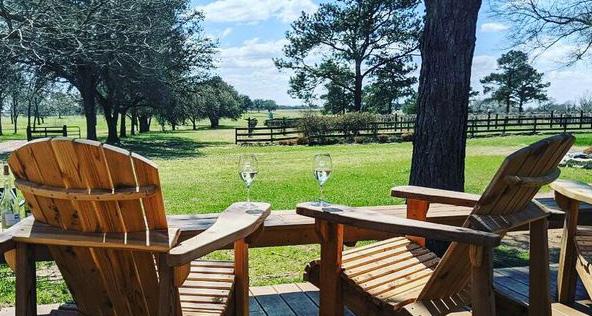
38 THRESHOLD VINEYARDS EXPLORE.US

39
The Art of Being Navasotan
WRITTEN BY MARK TAYLOR
From the 1800s to the present day, Navasota has been the largest community in Grimes County. And just like people need places to eat and sleep, they also need entertainment, culture, and the arts. Just before the turn of the century, Navasotans regularly frequented “the opera house block,” where they could be entertained by traveling shows in places like the Columbia Opera House. There, they might be entertained by Vaudevillian shows like Charles E. Blaney’s A Boy Wanted, Just for Fun, a production of Martha put on by the Andrews Opera Company, or The Lightning Red Agent by the Manhattan Stock Opera Company. Tickets could be purchased at Goodman’s Drug Store or The Fruit Palace.
Nowadays, folks have lots more entertainment options. There’s live music on the rooftop at Rail & Rye or on stage at The Western (see the restaurant article in this issue for more information on those venues), art galleries, history
museums, and live theater at the Navasota Theatre Alliance. There are festivals, wine shops, coffee klatches, bookstores, gift shops, clothing stores, and public outdoor artwork almost everywhere you look. The saloons of yesteryear have given way to the salons of a newly revitalized downtown area, and opportunities abound for merchants and shoppers alike.
Blues Alley
Mural

129
E. Washington Avenue
Four artists spent about eight weeks and $1500 on paint supplies to create a magnificent mural now referred to by Navasotans as Blues Alley. The incredible work pays
EXPLORE.US 40 THE ART OF BEING NAVASOTAN
homage to the music legends and icons that called Navasota home—Mance Lipscomb, Joe Tex, Tippy Larkin, Jerry Jericho, Texas Alexander, Blind Willie Johnson, Thomas Shaw, Johnny Bush, Julia Owen, Nat Dove, Lightnin’ Hopkins, Lightnin’ Junior, Mike Torres, and Big Lu Valeny and Los Muchachos. It’s an incredible musical mix that hints at the rich, musical heritage that’s now yielded an annual blues festival (which is making a comeback in recent years) and the summer music series in front of city hall.
Mayor Bert Miller commissioned the project and asked local artist Russell Cushman to take the lead. He brought in other local artists like Leon Collins, Frank Graham, and David Woods to complete the mural, which runs from north to south to fill the entire alley next to the Classic Rock Café. Fittingly, the shop inside the café, where you can purchase artwork, vinyl records, and other memorabilia, is called Blues Alley
Later, he left and returned to Texas Rangers a few times, retaining a Special Ranger commission. His most famous commission was as a special investigator hired by the Texas Prison system to track down the infamous outlaws, Bonnie and Clyde. It took Hamer just three months to assemble a team of law enforcement officers from Texas and Louisiana, track down the Barrow Gang, and ambush them near Gibsland, Louisiana, killing the lawless lovers. In honor of Frank Hamer, Navasotans commissioned local artist, Russell Cushman, to create a statue of Hamer that now sits in front of Navasota City Hall. Even one of the local watering holes, Hamer’s Speakeasy in the newly restored (and award-winning) P.A. Smith Hotel & Event Center, is themed for the famed ranger. The drink names evoke Hamer’s nickname (Pancho), his sidekick (Maney Gault), his wife (Gladys), to his pistol (the .38 Special), and even the 157 bullets embedded in the front of Clyde Barrow’s car after the ambush (the Highway’s 157).
Horlock House Art Gallery & History Museum
1215 E. Washington Avenue
The Horlock House serves as an art gallery, a history museum, and an actual home to artists from around the world as part of the Artists in Residence program curated by the Arts Council. The house was donated to the Grimes County Heritage Association in 1981 and is currently owned by the City of Navasota. The Artist in Residence program gives three artists the opportunity to live and create art at the house, which features living quarters, studio space, and gallery space, combining to create a unique experience and atmosphere for the artists. A native of Alabama, Robert Augustus Horlock (1849-1926) came to Navasota in 1871 where he became a prominent businessman and civic leader. He and his wife, Agnes (White), built the home in 1892. The house
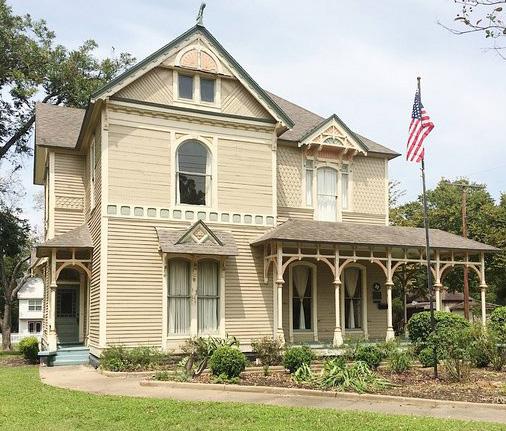
Frank Hamer Statue
200 McAlpine Street
The Texas Rangers (the actual ones, not the baseball team) were established in the early 1800s, in the early days preceding the Texas Revolution. Most are legendworthy, and they’ve been called “men who could not be stampeded.” The Texas Ranger Hall of Fame list includes big names like Stephen F. Austin, Jack Coffee Hays, Bigfoot Wallace, and Sul Ross. One of the least “stampedable,” however, was Frank Hamer. Hamer could easily be called “the Repeat Ranger” because of his numerous terms of service. After joining the prestigious group in 1906, Hamer resigned in 1908 to accept a position as City Marshal for Navasota, where he helped clean up the town from its lawlessness. Only 24 years old when he took the job, Hamer helped clean up the town and earned the forever gratitude of Navasotans.
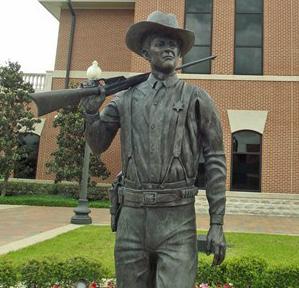
41 EXPLORE.US
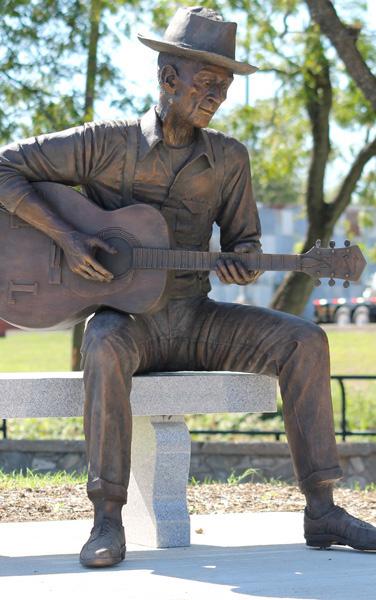
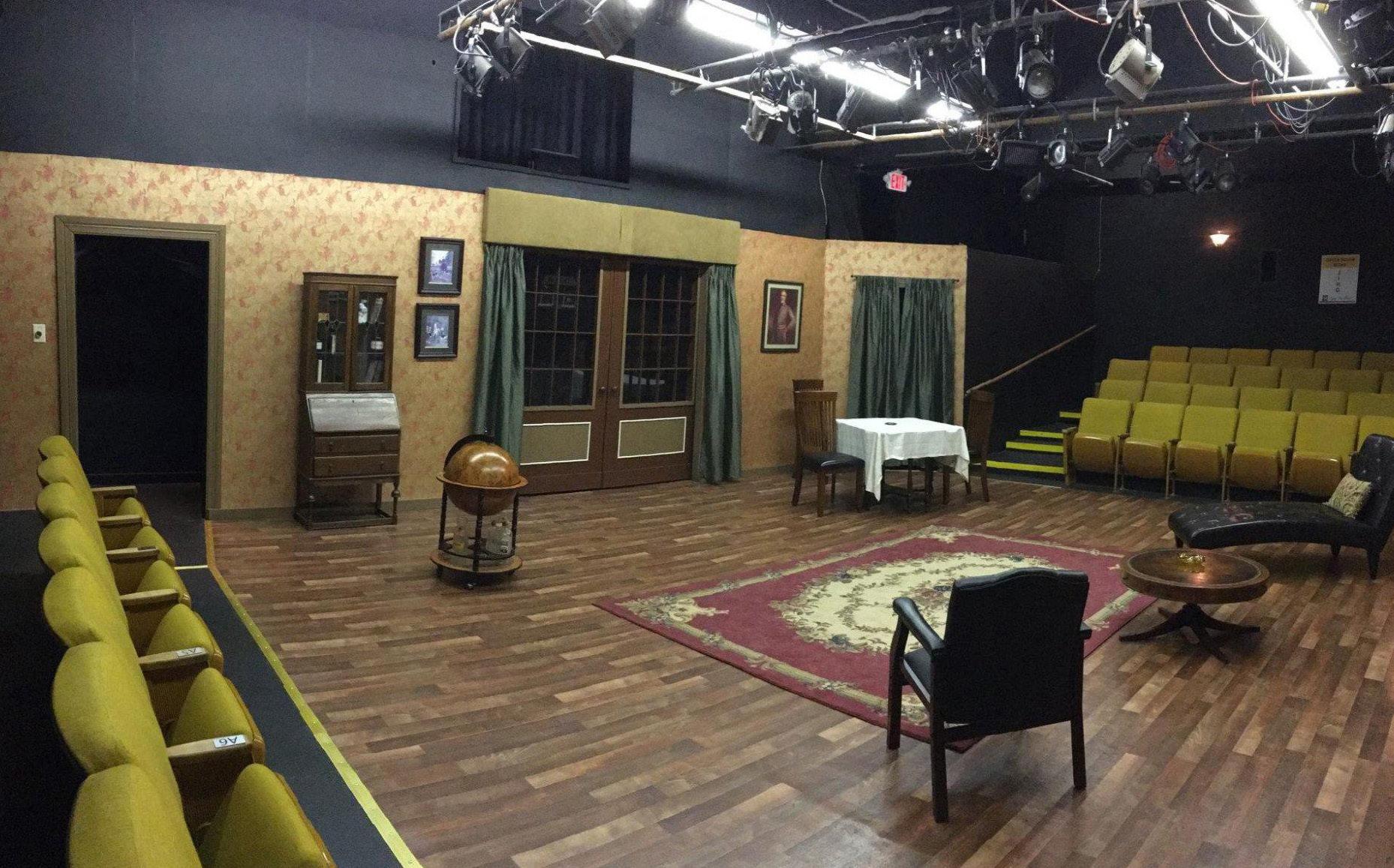
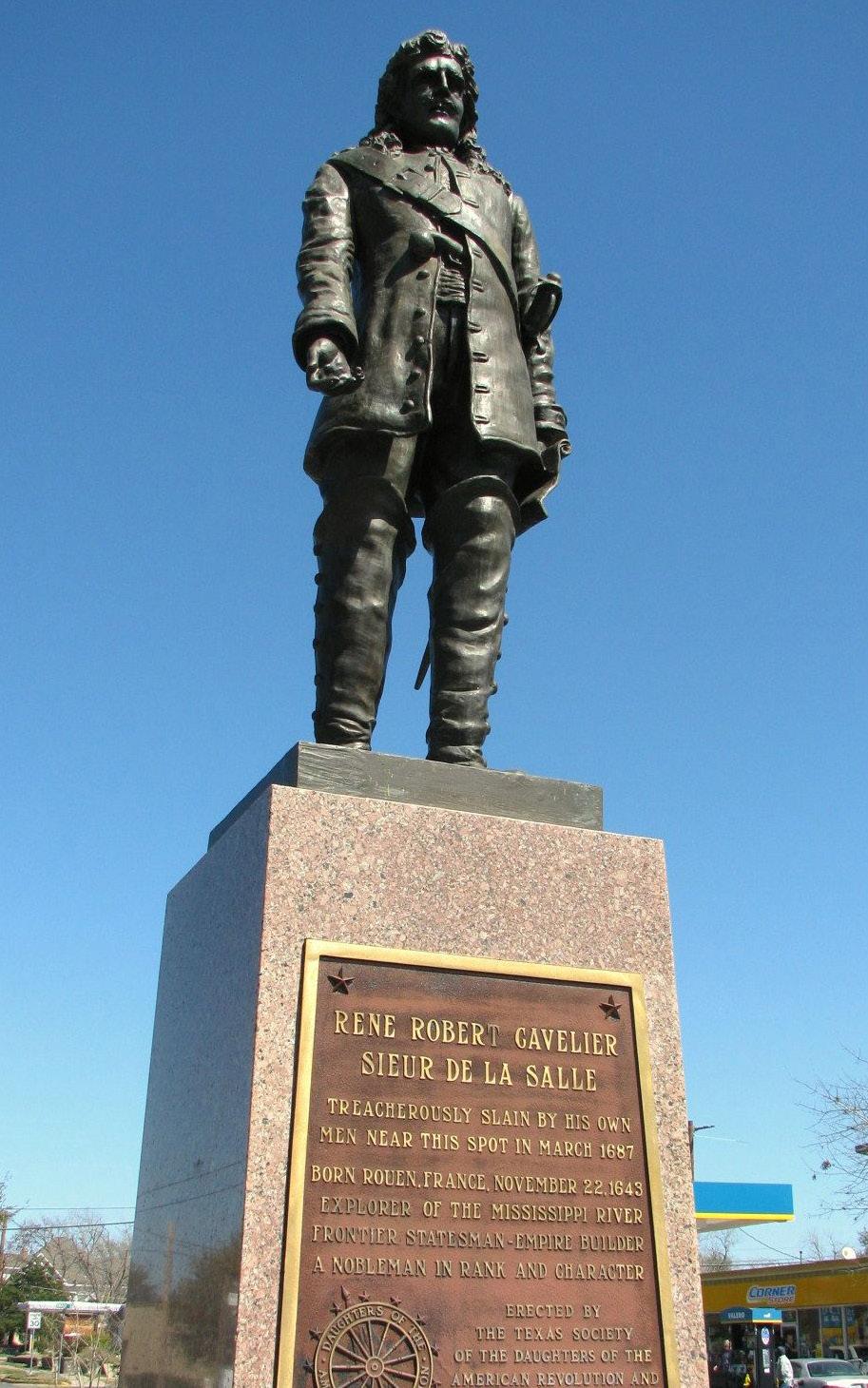
EXPLORE.US 42 THE ART OF BEING NAVASOTAN
stayed in the Horlock family for almost a century and still exhibits the influences of the Eastlake and Stick styles of architecture. Distinctive features of the home still include the corner porch, the arched windows with small gabled hoods, and the decorative woodwork. It was recorded as a Texas Historic Landmark in 1984.
LaSalle Statue
Intersection of Washington Avenue & La Salle Street
If you visit this sculpture, you’ll want to look both ways for cars first. It’s near the intersection of Navasota’s two main drags, Washington Avenue and La Salle Street. Commissioned by the Daughters of the American Revolution, and created and erected in 1930 by the famed Italian sculptor, Pompeo Coppini, this statue of the eighteenth century explorer René-Robert Cavelier, Sieur de La Salle commemorates the demise of the famed French explorer. Miles from his ill-fated attempt at a Texas colony (near present-day Palacios, Texas), the general vicinity of Navasota marks the spot where La Salle was murdered by some of his own men. There’s not an actual grave here since La Salle wasn’t buried; rather, his corpse was left in the wild as a ragtag band of Frenchman made their way to French settlements in Canada after the sinking of their only ship, La Belle, pretty much abandoning Fort St. Louis on the banks of Matagorda Bay. The ship was discovered and excavated in recent decades and now is on display at the Bob Bullock Museum of Texas History in Austin. Meanwhile, this statue pays tribute to the explorers bones scattered over the Navasota river bottom somewhere nearby.
Mance Lipscomb Statue
Mance Lipscome Park, 140 N. LaSalle Street
In 2011, a 300 lb. statue of the legendary jazz musician was unveiled in the area now known as Mance Lipscomb Park. The park sits along the creek just off the city’s busiest intersection. As a matter of fact, it’s within walking distance of Blues Alley, the LaSalle statue, and the Frank Hamer statue. The commissioned work was created by was Sid Henderson of and portrays Lipscomb playing his guitar, seated on a bench, with plenty of room for jazz fans and musicians to sit beside him for a selfie or play their own instruments in the park. Lipscomb’s grave is less than a mile away, in the Rest Haven area of the city’s Oakland Cemetery.
Navasota Theatre Alliance
104 W. Washington Avenue
Live stage performances year-round entertain audiences at NTA’s Sunny Furman theater in the historic Ketchum
Building. The group performs a variety of award-winning stage plays and musicals, including summer day camps for both kids and teenagers. Board President, Joyce Yorek, said NTA makes every effort to produce a wide variety of family-friendly shows for local audiences. “In addition to big-name Broadway shows,” she explained, “we also occasionally produce locally written shows. We recently hosted performances of The Supper Club, written by Brenham playwright Claire Broun Johnson.”
NTA also annually hosts a program called Lanterns & Legends. “We go off campus for that one,” Yorek joked. Performances for Lanterns & Legends happen at the city’s Oakland Cemetery, where actors portray half a dozen historic citizens from Navasota’s past. The tours are conducted at the end of October each year, using lanterns to light the way to each gravesite where patrons get to listen in as tour guides interview the living legends from centuries past. “It’s so great to be able to celebrate the people who have built our community and played a key role in shaping its personality,” Yorek said. “I think it’s one of the best things we do.” The scripts are written locally by a team of talented playwrights, further showcasing the area’s creative talent.
Recently, the theater has been able to partner with local restaurants like Red Board Tavern to provide packages that include dinner and theater tickets. NTA offers season ticket packages the include a Fall Season Opener (September/October), Lanterns & Legends in October, a holiday show (December), a Winter show (February/ March), a Spring show (April/May). The run of each show features both evening and matinee performances, depending on the day. Professional and amateur actors alike come to audition for the shows,” said Yorek. “We hire professional directors for each show, and we maintain a pretty high standard for the quality of sets and costumes. We want to make sure our audience is delighted with every aspect of each show.” Season packages and individual tickets can be purchased on the NTA web site at www.navasotatheatre.com.
Patout’s Wine Shoppe
213 E. Washington Avenue
Owners Krystal and Jay Patout live in Houston, but their hearts are in Navasota and so is their new business, Patout’s Wine Shoppe. The couple both grew up in Navasota and Jay is a fourth generation Patout. Navasotans will know the Patout name from the Patout buildings downtown, the Patout & Company accounting firm (now called Brewer, Eyeington, and Patout) that’s been around for years, and Patout Pond. Patout’s Clothing Store was a Navasota staple for years, owned and operated by Jay’s grandparents, and it’s that logo that Krystal and Jay used for the new wine shop as they put the family name out there again by offering quality wines sourced from near and far (they’ve already coined a phrase hints at offerings from the Napa Valley with their web site: www.napasota.com). Ensconced in a charming renovated space in a building owned by
EXPLORE.US 43
Jay’s dad, Jared Patout, they’ve created a comfy venue for friends to sit down and enjoy on premises, original artwork from local artists Leon Collins and Molly Bee, and wine-related gifts and accoutrements to complete the experience. Open Wednesday through Saturday until 9 p.m., Patout’s Wine Shoppe also participates with the downtown merchants in quarterly Sip & Shop events and in the annual Red, Wheat, and Blues festival hosted by the Navasota Chamber of Commerce. They’ve just been open for the past year, but already the venue is proving to be a hot spot for evenings out with friends, date nights, and folks looking for a quiet spot to sit down with a book while they enjoy a glass of vino.
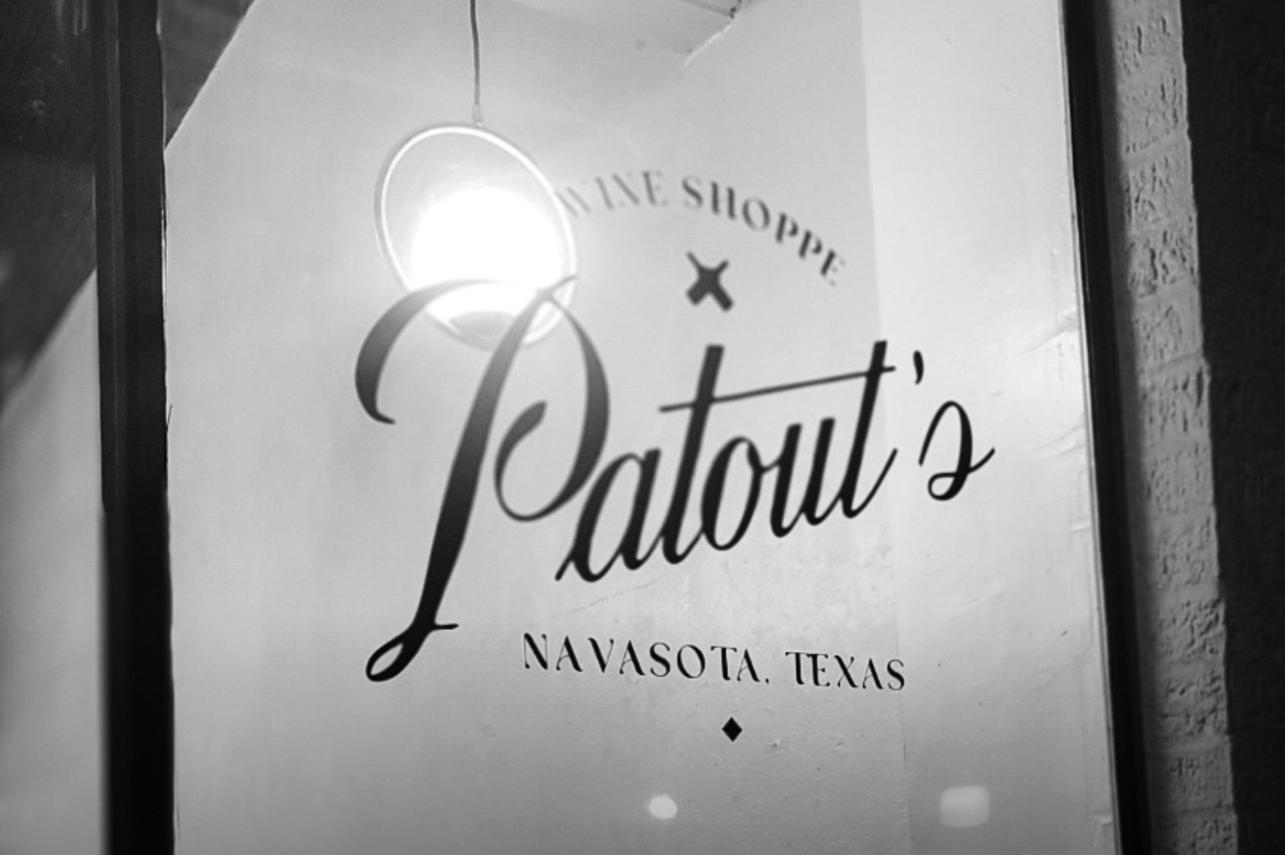
Red Velvet Inn & Gallery
803 S. LaSalle Street
The Red Velvet Inn & Gallery is a delightful bed and breakfast, set in a wonderfully restored, Victorian style house that’s over 130 years old. Guests can choose from one of four rooms, or rent out the entire home.
The home is just a few blocks from the historic downtown area, so the downtown amenities are definitely within walking distance. The Red Velvet Inn now has an onsite art gallery with works for sale from a variety of Texas artists. The remarkable structure was built by Charles W. Stewart, who was twice elected mayor of Navasota. Stewart’s father, Charles B Stewart, was what you might call a “signer” and a “designer.” He was a signer of the Texas Declaration of Independence and designer of the Texas flag.
Owners Carole and Byron Small operate the Red Velvet Inn & Gallery as a full-service bed and breakfast and serve gourmet, home-cooked breakfasts on fine china for their guests every morning. “Breakfast times are flexible,” said Carole. “You just let us know what works best with your schedule and whether you have any dietary restrictions.”
The B&B’s guests don’t have to worry about parking because the Inn has its own “horseless carriage” (a stretch golf cart) that will shuttle guests back and forth from the downtown area and the city’s historic neighborhood.
“We purchased the property in October 2020 as our primary residence fully intending on reopening the B&B after I retired from my career as a Hospice nurse,” explained Carole. “Renovations after our purchase included building a detached garage, updating the
EXPLORE.US 44 THE ART OF BEING NAVASOTAN
electrical system, enclosing the previous one car garage making it an art studio and creating a studio apartment in the storage area behind the garage. We also put in a stair chair lift, repainted the downstairs and created an on-site art gallery on the ground floor of the house.”
When asked where the name of the B&B came from, Carole explained. “The Previous owner named the inn, and we assume she must’ve loved Red Velvet cupcakes. With the large sign, and familiar name, we continued to call it the Red Velvet Inn but added the Gallery portion on the new name certificate issued by the State. We continue to serve Red Velvet pastries to our guests, and have added Red Velvet pancakes to the menu for breakfast.”

Small went on to describe some of the more interesting features of their B&B. “The onsite Art Gallery is very unique,” she explained, “and a variety of top-quality art hangs throughout the home. The house on its own merit is a piece art and history. Even though we’re not located on the main shopping streets, people love to walk through our doors and experience the feeling of yesteryear! We have decorated with period antiques and most of our wooden floors are in their original state. Our four bathrooms all have claw foot tubs. Each floor of our home hosts very large covered porches, perfect for lounging and talking story.”
“November 2022, the Gallery hosted their first Veterans Day Red Velvet, Holidays and Fine Art show featuring
both local and other well-known Texas Artists,” Carole said. “We’d like to make this a yearly event. Other annual events planned will consist of a juried Art Show int he summer, at least two solo shows for our Gallery artists, and an art show featuring the works of our Navasota High School Art and Drama students and teachers. Plans are also in the works for Date Night Painting Parties and Girls Weekend Painting Retreats.”
Navasota’s Culture
Photo ops and entertainment ops abound here in the heart of Grimes County, from wine shops and art galleries to outdoor art, live entertainment, art and history museums, festivals and more. You also won’t want to miss the huge rattlesnake sculpture in front of the high school’s Rattler Stadium or the giant Welcome to Navasota post card mural that makes for a great photo op. The art of being Navasotan involves being well-versed in history, live music, museums, live theater, law enforcement, world class food, and copious amounts of fun. Historic, downtown Navasota brings all these things together in a way that deeply respects the past while planning ahead for future growth.
45 EXPLORE.US
ergo GENESIS ERGONOMIC WORKPLACE SOLUTIONS
WRITTEN BY JESSICA CLEMENTS PHOTO BY CONNIE CLEMENTS
In a study of the body in its natural form in weightlessness, the National Aeronautics and Space Administration (NASA) found a naturally open posture to which one’s body will conform. The discovery of this natural, relaxed and non-stressed position was the inspiration behind the award-winning BodyBilt® chair, manufactured and distributed by the Navasota-based ErgoGenesis Workplace Solutions, LLC (ErgoGenesis).
ErgoGenesis moved to Navasota in the mid-1990s when it outgrew its facility in College Station, Texas. Now, its corporate headquarters sits on just over nine acres off Highway 6, with nearly 73,000 sq. ft. of office, warehouse, manufacturing and dock space.
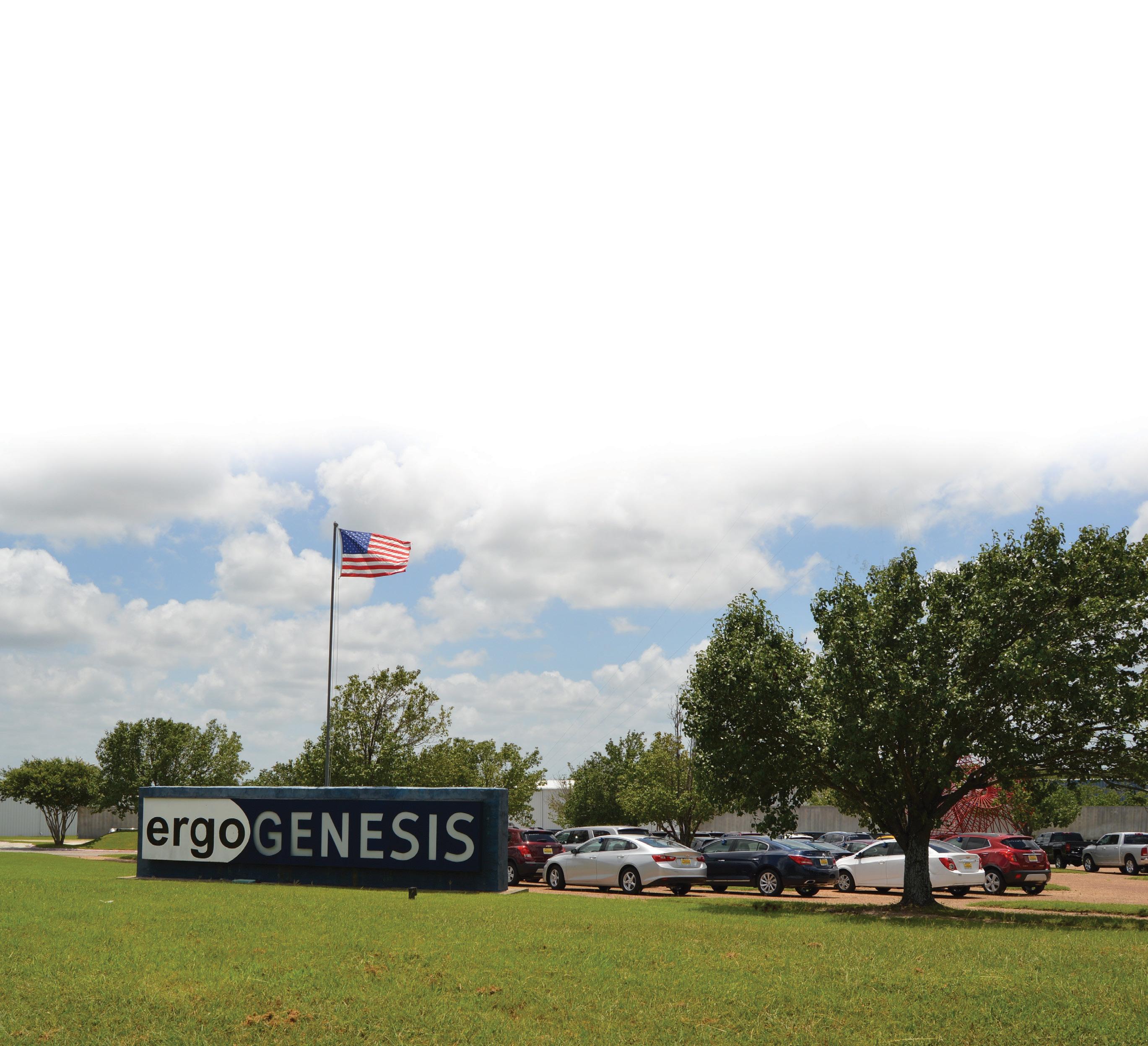

LOCAL PRODUCTION IN FULL FORCE
ErgoGenesis Vice President and Chief Financial Officer William Doyle affirms that Navasota is a great location for the company. “Navasota’s been great! We’ve been able to pull employees from the area; our production workforce is pretty local with most being from Navasota, Brenham, and other Grimes County towns.”
Employees in the Navasota facility manufacture many of the components, and they assemble all the chairs in-house. “If you want a standard chair without special sewing and we have the components, it would probably only take two to two-and-a-half hours,” said Doyle.
According to Doyle, the Navasota headquarters employs approximately 90 personnel locally with a total of 125 around the nation. ErgoGenesis is a business-to-business (B2B) company, so its sales and business development professionals work from various offices around the country, while some customers simply purchase products on the company’s website (www.ergogenesis.com).
Doyle added that the company knows how important the community is and tries to be a good corporate citizen for the area. He explained, “We donate chairs to a lot of different charities and a lot of different groups. For example, we’ve done the Grimes County Business Expo—we normally have a giveaway at it—and some of the local churches. We also donate to Boys and Girls Club.”
APPLYING THE PRINCIPLES
ErgoGenesis is perhaps best known for its BodyBilt ergonomic seating. The first principle of ergonomics, according to Dan MacLeod, Ergonomics Consultant, is to work in a position such that your body is in a neutral form. This takes into account the “S-curve” of your spine, neck alignment, and elbow and wrist positions. The BodyBilt chair does just that.
“Our chairs are designed to put you in a more ergonomic position so that you don’t have the aches and pains that go along with carpal tunnel or stress disorders on your back or arms and legs,” said Doyle.
He noted that ErgoGenesis can accommodate special orders in addition to standard designs. “We can fulfill special orders by taking general measurements of height and inseam to determine how high your chair needs to be. It’s custom made. We have nine different seat pans to accommodate from 80 pounds to 700 pounds, and six to eight different backs that can be put on a chair. “You can have an upholstered back or a mesh back. A lot of people have gone to the mesh seating where it’s open and you can see through it, but it still supports your back and everything,” he added.
58 46 ERGOGENESIS EXPLORE.US
He noted that ErgoGenesis can accommodate special orders in addition to standard designs. “We can fulfill special orders by taking general measurements of height and inseam to determine how high your chair needs to be. It’s custom made. We have nine different seat pans to accommodate from 80 pounds to 700 pounds, and six to eight different backs that can be put on a chair. “You can have an upholstered back or a mesh back. A lot of people have gone to the mesh seating where it’s open and you can see through it, but it still supports your back and everything,” he added.
Along with the general measurements required for a custom order, Doyle explains that certain medical issues can also impact the type of seating that is best for a person. He states, “If you have any medical issues—like tailbone issues—we can design a chair so you don’t have any pressure on your tailbone. If you have back issues, we can design the back of a chair so it supports your back better than a standard chair.”
ONE-STOP-SHOP CONVENIENCE
In the last few years, ErgoGenesis has expanded its product range to include office accessories. This enhanced offering provides customers with a convenient one-stop-shop experience whereby they can purchase ergonomic chairs, height-adjustable tables, standard desk accessories and more from a single supplier.
Furthermore, the uniquely modular design of BodyBilt accessory products allows customers to expand and adjust their workstations easily and at less cost.

Doyle reiterated the health and safety benefits that an ErgoGenesis BodyBilt chair provides. “I think everybody should be sitting in a BodyBilt chair just because of the health benefits that you gain out of it. I’ve been in the same chair now for 12 to 15 years, eight to 10 hours-aday, and I’ve never had any issues with a back problem or carpal tunnel or anything like that.”
EXTENSIVE CUSTOMER BASE
ErgoGenesis is a nationwide organization that sells products to customers throughout Europe, the Middle East and the United States. Doyle estimates that the company sells to a vast majority of some of the most successful U.S. businesses. “If you look at the Fortune 500 list, we’re probably at 90 percent of those companies, whether standard or special needs and custom products.”
Although primarily a B2B operation, individuals from U.S. Presidents and Governors to CEOs and professional athletes are also customers. In fact, ErgoGenesis products have been on magazine covers and traveled the world with their owners.
Workplace Solutions LLC One BodyBilt Place, Navasota, Texas 77868 For more information or to place an order, visit www.ergogenesis.com 1-800-364-5299 EXPLORE.US 47
ErgoGenesis
Eats to Beat and Unique Places to Meet in Navasota
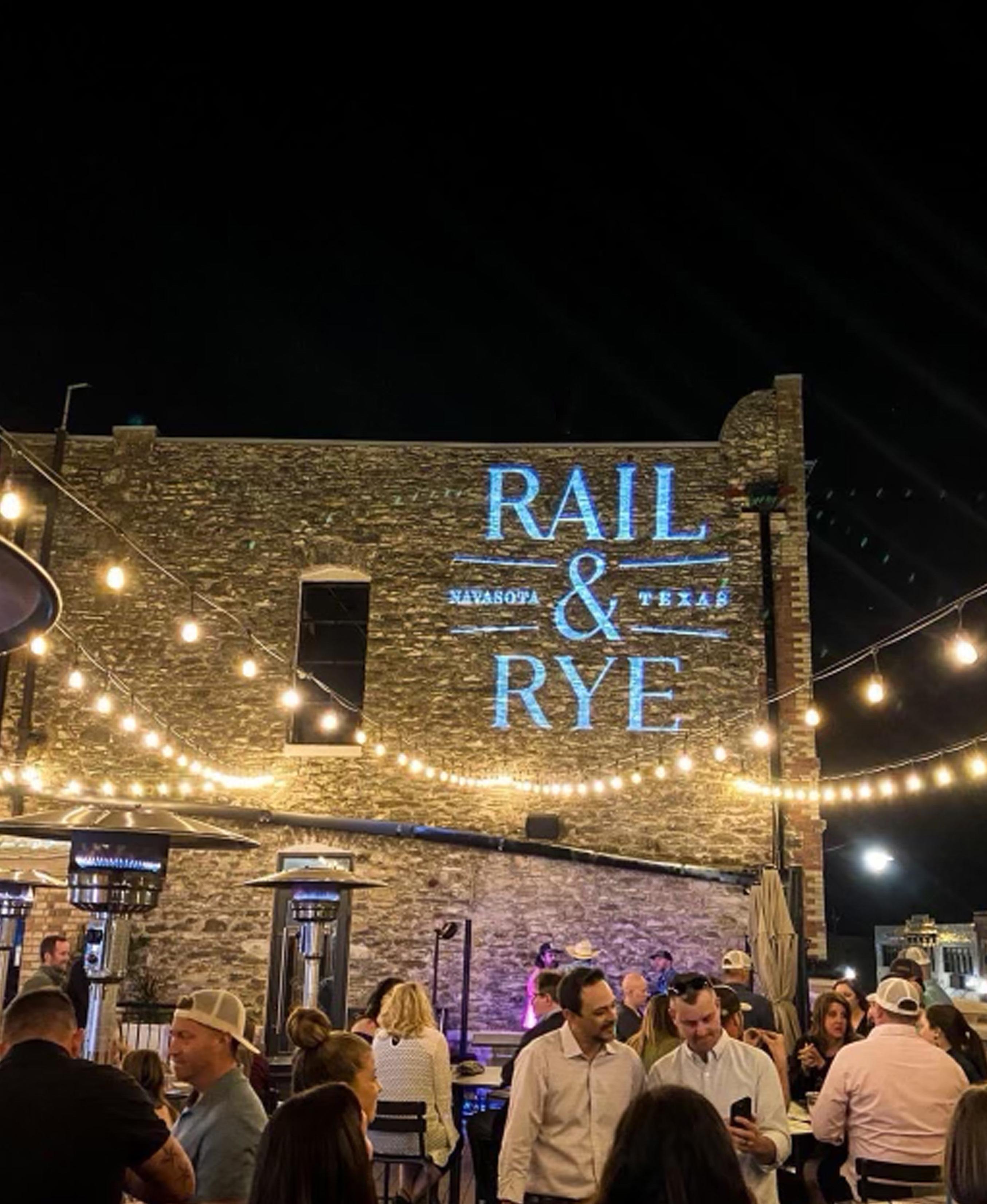 WRITTEN BY MARK TAYLOR
WRITTEN BY MARK TAYLOR
48 EATS TO BEAT EXPLORE.US
From the time Navasota was just a stagecoach crossing called Nolansville in 1831, people have come to the area looking for a bite to eat. There was the dining room at Fanny Geisel’s hotel, which she called The Good Morning John in 1871, Kampe’s Railroad Street Bakery & Restaurant or Mrs. Hoyle’s Palace Restaurant in 1898, or the Candy Kitchen in 1909. By 1930, you could get a Sunday lunch at the Camp Coffee House for just 75-cents—and that included a shrimp cocktail, chicken consommé, filet mignon, buttered asparagus on toast, fruit drops in champagne sauce, Parker House rolls, and a banana shortcake with whipped cream!
A lot has changed in nearly two centuries of Navasota life, but one thing has stayed very much the same— people still want a good place to eat, and luckily this historic town is true to its roots in being a great place to satisfy a hankerin’ or quench your thirst. The names and recipes may have changed a bit, but you can count on being able to get a great meal in Navasota.
Italian egg dish that comes with soup or salad), and the Haulin’ Oats. For lunch, you might want the Freebird sandwich or the Thunderstruck burger, or you might just go ahead and order from the breakfast menu, which is available all day long. And you can always finish it off with the Belgian waffles, piled high with whipped cream and covered generously with caramel sauce and maple syrup. “We used to be a coffee shop with little food,” jokes Mayor Miller, “and now we’re a restaurant that serves coffee.” When asked about celebrities that have visited the restaurant, manager, Ethan Barcak says with a smile: “Well, the mayor is here twice a day.” But Classic Rock has also had a visit from Paul Stanley (lead vocalist/guitarist from KISS), and recently hosted Canadian YouTube sensation Joel Hansen, who attempted the Ultimate War Pig Challenge—seven slices of toast, a dozen eggs, 12 slices of provolone, 12 slices of bacon, 12 pork sausage patties, and 18 pieces of ham. You have 15 minutes to finish it (alone, not with friends) and, if successful, earn a $49 gift card (the cost of the sandwich) and get your name and picture on the wall.
Classic Rock Coffee Co. & Kitchen

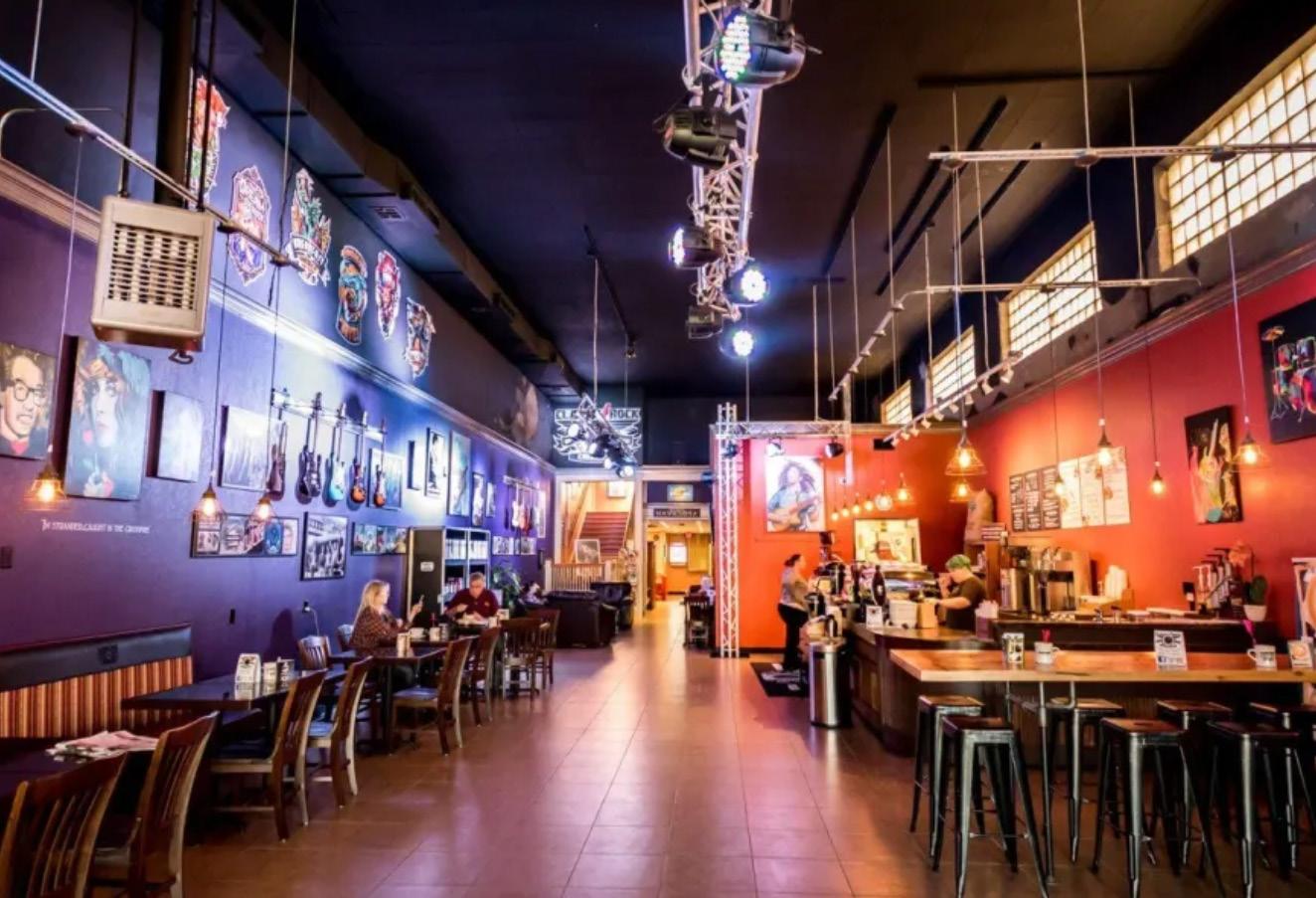
129 E. WASHINGTON AVENUE
As the “Blues Capital of Texas,” it stands to reason that there would be at least one culinary corner that pays homage to Navasota’s rich musical heritage. Classic Rock Coffee Co, & Kitchen, owned by Navasota Mayor Bert Miller, is just that place. Situated on the town’s main street (Washington Avenue), just next to Blues Alley, Classic Rock is best described as a hybrid mix of record store, coffee shop, and rock museum. The décor features electric guitars on the walls, vinyl records for sale in the back (the section of the café they call Navasota Blues Alley), warm pastries in the display case, and freshly roasted coffee beans, it’s a blend of everything you could ever want. But if you think it’s only a coffee shop, you’d be way wrong. Classic Rock Coffee Co. & Kitchen features a full breakfast and lunch menu that’ll have you pulling up a chair and settling in to savor the whole experience. The breakfast menu features entrée items with names like the War Pig breakfast sandwich, the Strada-Caster (a classic
111
S. RAILROAD STREET
Hamer’s Speakeasy
Traditionally, speakeasys were advertised only by word of mouth—and notoriously difficult to obtain entry into without a connection. Hamer’s Speakeasy, hidden somewhere inside the beautiful P.A. Smith hotel, doesn’t have a sign outside or any flashing neon lights. Whether you take the catwalk, the hidden stairway, the antique elevator, or the private entrance, you have to find your own way inside. The name comes from famed Texas Ranger Frank Hamer, a former Navasota marshal who earned his place in the history books for leading the posse that tracked down (and killed) the infamous outlaws, Bonnie and Clyde. The tucked-away is a quiet oasis with comfy furniture and a relaxing atmosphere, not to mention a drink menu that’s like a history lesson. The Hamer-themed menu offers a variety of historicallynamed cocktails and beverages that will have you reading the drink menu like it’s a great book!
Cafe M. Bloomers
Martha’s Bloomers is a delightful garden oasis just off Texas Highway 6. Featuring the “world’s largest teapot,” the location is the ideal spot for a garden party. The place is part plant nursery, part gift shop, and part lunchtime
 8101 STATE HIGHWAY 6
8101 STATE HIGHWAY 6
49 EXPLORE.US
garden café. As you might expect, the lunch menu features names that evoke the location’s garden theme. You might try the Geranium plate, the Azalea sandwich (no Azaleas are harmed in the making of it, by the way), the Black-Eyed Susan or Larkspur salads, or the Lantana wrap. After lunch, there are garden paths to explore, as well as a pottery house, a 90-year-old, barn-type edifice that was rescued from demolition relocated from nearby Brenham to Navasota. The pottery house features many types of glazed and terracotta pottery from around the world. Martha’s Bloomers also hosts seasonal and special events throughout the year.
Rail & Rye





101 RAILROAD ST. AT WASHINGTON AVENUE
As a Union Pacific Train Town USA, the railroads are obviously a prominent feature in historic, downtown Navasota. So, it’s no surprise that the iron horse and its tracks served as an inspiration for local entrepreneurs Jessica and Chris Tucker. Not content to put their dining room and rooftop bar in just any old building, the Tuckers went all out and completed renovate the town’s most iconic landmark, the three-story Citizens Bank & Trust building built in the late 1800s. The century-plus building was completely redone to show off the original brick interior walls and arched windows, along with elaborate wrought iron capitals. “We were pleasantly surprised to find all this incredible architecture tucked away for years under a drop ceiling,” Chris Tucker shared. The lighting, fixtures, full-service bar, and upscale menu are attractive to locals and visitors alike. Menu features like the Railroad Hash and Rye Crema and the Farmer’s BLT with ChiliSeared Watermelon hint at the local history, but entrée items like the Smoke Duck Carbonara, the Pan-Seared Barramundi, or the Tomahawk Ribeye steak (which feeds four people) will leave no doubt in your mind that Rail & Rye’s menu is always trying something new. The Tuckers are winning over many hearts and tastebuds by sourcing local ingredients whenever possible. Local honey and mead come from Navasota’s Wildflyer Mead Company, microgreens from James Hinton’s Zero-Point Organics farm in Waller, Swiss chard from Doris Saul’s Land of Milk &
Photo by iStock/5PH
Photo by iStock/Iren_Key
Photo by iStock/VeselovaElena
EXPLORE.US 50 EATS TO BEAT
Photo by iStock/fudfoto
Honey Farms in Navasota, and a variety of other locally sourced, farm-to-table ingredients. The restaurant’s street level dining room accepts reservations and walk-ins, and the outdoor rooftop bar regularly features live music that floats out over Navasota’s main drag. And if you hear a train whistle, it’s the real deal. As the anchor of Railroad Street, Rail & Rye is definitely something to toot your horn about!
Red Board Tavern

117 S. RAILROAD STREET
It’s one of Navasota’s newest hot spots, but you’d never know it because it fits into the Railroad St. culinary scene so seamlessly, it seems like it must’ve been here forever. When Janice and Steve Scheve spent four years doing a spectacular renovation of the landmark P.A. Smith Hotel, they knew they’d need a world-class restaurant on the street level. “Red Board is railroad speak for ‘stop here,’” explains Janice. And you’ll definitely want to stop here for lunch or dinner as soon as possible. Red Board’s chef, Craig Schmidt, has quite the resume. After his years of service in the army (and being among the first boots to hit the ground in the 1983 U.S invasion of Granada), he earned a Culinary Arts Degree from San Joaquin Delta College, followed by additional degrees in Baking and Pastry from the Culinary Institute of America (CIA) in Hyde Park NY. Chef Schmidt was among the team of chefs that opened the much-lauded French Laundry in California, one of the highest ranked Michelin star restaurants in the US. Red Board Tavern is likely one of the few places in the U.S. where you can get a chicken fried rabbit haunch, a corn fried Australian lobster tail, passion fruit barbecued dayboat sea scallops, and a Provimi veal liver with balsamic glazed cipollini onions. Or you might opt for crispy Duroc hog pork bellies after you try the Triple Play deviled eggs appetizer (think deviled eggs done three hypercreative ways—and you get to try them all). The restaurant boasts an ever-growing wine selection, curated by its perfectionist and hands-on manager, Jacob Moore, along with daily features that showcase Chef Schmidt’s rich and varied background and travels. Don’t skip dessert, either. If you get too full to drive home, you can just roll into the exquisite P.A. Smith hotel and spend the night!
The Western Steakhouse & Dancehall

9524 STATE HIGHWAY 6 SOUTH
In terms of place names that describe the function and mission of the place, this one pretty much says it all. The Western is a great place to graze on mouth-watering steaks and fried pork chops as well and then burn off some of those calories “cutting a rug” to live music in the dancehall. What else says “Texas steakhouse” than an appetizer that literally consists of a 16 oz. ribeye steak cut into one-inch cubes and cooked to order. And, of course, you can get a chicken fried steak that lops over the edges of the plate, complete with potatoes any way you like them, and a variety of vegetable selections. It’s also one of the few places you can order quail and frogs legs on the same plate. You can make a table reservation in the restaurant or in the dancehall, and if you have an RV, you can park it out back in the new RV lot created for the slew of live music enthusiasts who regularly flock to Navasota for live music concerts and dancing at The Western.
Other Local Favs
When you consider top-notch barbecue joints like Mallet Brothers Barbecue, an active food truck scene, local, hole-in-the-wall burger places like Carol’s Giant Burger, plenty of watering holes and fast food spots, and enough Mexican food restaurants to give you a different option every night of the week for your favorite fajitas, tacos, and enchiladas, Navasota may want to look at attracting more athletic clubs in the future, so folks can work off all these tasty calories! With a burgeoning population, a central location, and friendly faces everywhere, it’s no wonder people from all parts of Texas are road-tripping to Navasota for a tasty lunch or a night out on the town.
EXPLORE.US 51

EXPLORE.US 52 JOLLISANT FARMS
Outside, customers can pick their own asparagus, cucumbers, dill, green beans, lettuce, okra, squash, Swiss chard, tomatoes, zucchini, black eyed and purple hull peas, blackberries, blueberries, strawberries, cantaloupe and watermelon.
Kuta said, “We are bringing people into Grimes County.” As for the farm’s attraction, Kuta said, “I think that it is the wholesomeness, the peacefulness of the farm and enjoying being able to get out of the city and spend the day with their family. Picking is something a lot of families have no knowledge of. Most adults can’t tell you what a potato plant looks like. A lot of our customers are homeschoolers and they’re teaching their kids the value of growing, what plants look like, and how to pick. I think more families are trying to get back to the basics of what our country was built on.”
The Jollisant’s encourage families to bring a picnic lunch and spend the day at the farm. A small play area was added in early 2016, and Kuta says “the next part of expansion is to grow the playground.” Birthday parties are held in the original dairy barn, and other activities include organically fed catch-and-release bass fishing and catfish that staff will fillet for take-home.
Jollisant Farms has blackberries, blueberries or strawberries available 10 months of the year. The next crop of their popular strawberries will be planted the last week of August. The farm purchases their strawberry plants from Canada.

Kuta said, “When they get here and go in the ground, the ground is still warm because it’s September and October. They think it is spring and immediately start blooming. We start harvesting the week of Halloween and pick until the end of May. We have strawberries through the Texas fall and winter seasons.”
Q Q
Kuta said, “Our goal is that we want our customers to come out and know us. We want them to feel comfortable; to come at any time to see what we’re doing and how we’re doing it. We enjoy educating them through jam-making classes and pickle-making classes. We will even help them set up their home garden. Our goal is to get the world eating the right way.”
JOLLISANT FARMS
11351
In February 2013, the farm officially opened as “pickyour-own.” Their primary customer base comes from surrounding Texas cities such as Mongtomery, The Woodlands and Katy, with some customers from the Bryan-College Station area.


up-to-date on events or get information on Facebook at www.facebook.com/jollisantfarm Call (936) 894-2766. 77 PLANTERSVILLE 53 EXPLORE.US
CR 203, Plantersville, Texas Stay
Nav gating
navasota’s History
WRITTEN BY MARK TAYLOR
Every city likes to think of itself as unique, but Navasota has some fairly decent bona fides to back up such a claim. For example, you can find many city and county names that exist in numerous U.S. states. Do you know anyone from Washington? There’s a good chance of it, since there are some 91 places across the country that go by that name. How about Franklin? There are 45. Fairview? Madison? The list goes on.
But there’s only one city in the world named Navasota and only one county in the world named Grimes County, cues that you’re in for something special when you roll into this unique, small, city near the big bend in the Navasota River. The town takes its name from the river, which is the Native American word for “muddy water”— nabatoto. Old timers (the really old ones) just call it “The Navasot.”
French Visitors
The French had planted their flag in Texas, but within a short time, found themselves juste de passage (just passing through), trying to survive. It was likely on the banks of the muddy Navasota river that the famed French explorer

René-Robert Cavelier, Sieur de La Salle, was murdered by his own crew in 1687. He was only 43 years old, and the murder was truly a last-minute plan thrown together after some members of the crew murdered La Salle’s nephew. Thus, ended not only the great North American explorer who came up with the name “Louisiana,” but also any hopes for a French colony in the area known by the Spanish as Tejas. The Spanish claimed Texas at that time but had not been much interested in settling it. However, the fact that the French had been interested in it was enough to compel the Spanish to begin establishing a presence in Texas with their presidios and missions throughout the region.
From Stagecoaches to Locomotives
Navasota is at a crossroads—literally. The community formed near the stagecoach crossing of the Spanish Empire’s La Bahia Road and the Navasota River, the two main access routes through the area. The area was originally called Hollandale, not because anyone from Holland settled here, but after Francis Holland and his brother, William, who followed the Coushatta Trace from Louisiana into the area with Stephen F. Austin’s Old 300
EXPLORE.US
54
Photo by iStock/Richard McMillin
NAVIGATING NAVASOTA’S HOSTORY
in the early 1820s. Francis settled on what is today known as Holland Creek, which runs just below Holland Ridge on the outskirts of Navasota.
Also arriving with the Old 300 was Jesse Grimes and his family, settling just outside present-day Navasota in a place he called Highpoint. There’s a Navasota ISD elementary school there today called Highpoint Elementary School
Grimes was friendly with the local Bedias Indians, and the tribesman even watched over Grimes’s house and family when he had to be away on business. By 1832, a Georgia planter called Daniel Arnold moved into the area to take advantage of the rich, fertile, river bottom soil for growing cash crops like cotton. Local families like the Hollands contributed their sons to the Texas Revolution in 1835 and 1836. Mercifully, Francis Holland had died in 1834 before the revolution that claimed the lives of his sons, Tapley and Francis. Jr.
In 1847, Grimes County was officially carved out of the larger Montgomery County, and the town of Anderson, named for the recently deceased last vice-president of Texas, Kenneth Anderson, was named the county seat. But it was Navasota that was situated ideally between the historic town of Washington-on-the-Brazos, which had served as the birthplace of the Texas Constitution and the signing of the Texas Declaration of Independence, and Anderson.
Settlers continued to come into the area, and by 1848, James Nolan sat up some tents and established squatter’s rights in the area. He had moved there just a couple of years earlier with his parents, his daughter, and a pet bear. Within a few short years, the log cabin Nolan built became a stagecoach stop, and by the mid 1850s, four different coach lines had stops in the community. Nolan had the foresight to purchase 133 acres of land from M.J. Duke and paid a fair price of 77 cents per acre at the time. He planted cotton on 15 of those acres in the area where Church Street is now located, and deed over four acres to Jackson Duke and Dickson Greer for a school (there’s a Valero gas station there today).
In 1854, the town was officially on the map with a post office, though the community’s official. name was still Hollandale at that time. When Anderson’s local landowners refused to give the Houston and Texas Central a right-of-way in 1857, it was a death knell for business. Similarly, in 1858 Washington-on-theBrazos rejected a request to pay the Houston and Texas Central Railroad an $11,000 bonus to link the town to a new rail line. So, new
railroads instead went to Hempstead in 1858, to Navasota (who was only too happy to roll out the red carpet for the Iron Horse) in 1859, and to Brenham in 1860. James Nolan sweetened the deal for the railroad by giving the Houston and Texas Central Railway some 80 acres of land. The result was predictable—Hempstead, Navasota, and Brenham grew, to the detriment of towns like Anderson and Washington, which persisted with its dependence on river transportation. Railroads would mean the end of steamboat operations on the Brazos and Navasota Rivers, and before the U.S. Civil War, almost all Washington-on-the-Brazos residents had moved to either Brenham or Navasota.
In 1903, Anderson residents agreed to the construction of the Madisonville Branch of the Missouri Pacific, from Navasota to Madisonville, but it was too little, too late. Navasota would become the largest community in Grimes County, a distinction that remains to the present day.
Post Civil War Challenges
When the Houston and Texas Central Railroad opened its line in Navasota in September 1859, Navasota became the marketing and shipping center for the region, equally poised for commerce coming in via the river or the rails. In the years leading up to the Civil War, Navasota’s businesses grew. During the war, Navasota was used to stockpile cotton, gunpowder, and guns for nearby Confederate Troops. Grimes County residents did their part, contributing five cavalry units and four infantry units to the Confederate Army.
As if losing the war wasn’t enough, a group of disgruntled Confederate soldiers wreaked havoc on Navasota on June 29, 1965. One of the soldiers threw a lit fuse into some loose gunpowder, ultimately igniting some 6100 pounds of it! The resulting loss was staggering. Eight people dead, with many others missing and never account for. Twenty Navasota buildings were reduced to ashes, including the warehouses of Thomas and Co., the offices and printing presses of the local newspaper, Nolan’s Hotel, and the entire block on the north side of Main Street. The loss was a whopping $100,000 in 1865 dollars!
The next few months brought changes to the community. In August 1865, the post office was officially renamed Navasota instead of Hollandale. It was on the Hempstead to Waco route, with mail delivered a few times a week in a four-horse coach. By October,
Navasota
55
the community had its first school for African Americans, and within a year, the City of Navasota received its first charter from the Texas Legislature in October 1866. Williams Jones was the city’s first mayor.
One of the earliest challenges for Navasota was a deadly cholera epidemic in 1866, followed by an even deadlier Yellow Fever epidemic the following year. Over half the city’s population fled the fatal disease, including the town’s mayor. By some reports, only some 400 of the town’s 3,000 residents remained. Lumber yard owner, Joseph Brooks, reportedly cranked out coffins 24 hours a day and still couldn’t keep up with the demand for the rough-hewn, hastily assembled caskets.
Social unrest grew in Navasota in the late 1860s amid political restructuring after the war. When Texas Ranger, Frank Hamer, resigned his post as a ranger in 1908 to become the Navasota City Marshall, he was no stranger to trouble. He had already played a significant role at restoring law and order to the Rio Grande River Valley. Known for its shootouts on Main Street, Navasota had seen its share of ruffians and troublemakers. Hamer quickly set about making an example of a few of them. The leadership of the town ran roughshod over Navasota when Hamer arrived. When Hamer’s first challenger stepped up, Hamer grabbed him by the beard and slammed him into the mud before dragging him off to jail. When he was called out as a coward for carrying two pistols, Hamer dropped his gun belt in the dirt and beat the accuser with his fists and feet in front of God and everybody.
Between his hardline approach to law enforcement and his public target practice, Hamer earned the gratitude of the Navasota residents and ran off the riff raff. As a gesture of recognition and gratitude, the Navasota City Prosecutor presented Hamer with Colt .45 revolver with his name engraved on the strap. Hamer called the piece “Old Lucky,” and it was one of the guns he carried when he tracked down and killed the famed outlaw couple, Bonnie and Clyde.
Hamer moved away from Navasota after spending a few years getting the town back on the right track. Today, a statue of the famous Texas Ranger sits in front of the Navasota City Hall and the newly created Speakeasy inside the P.A. Smith Hotel is called Hamer’s Speakeasy. One of the most popular drinks on the menu there is called the Old Lucky.
Immigrants from England, Germany, Poland, and other places in Europe made their way to the area. Henry Schumacher, a German native, set up one of the very first cottonseed oil mills in the area in 1873. As the story goes, he assembled the entire machinery for the mill using an old encyclopedia as a guide. The H. Schumacher Oil Works manufactured cottonseed oil, meal, and cake, processing approximately 1,500 tons of seed every year. In 1883, Schumacher was eventually feted at The White House for his contributions to the cottonseed oil at a special dinner at the White House hosted by President Chester A. Arthur. Schumacher’s first mill burned down in 1910, but was soon rebuilt, complete with modern machinery. The oil works ceased operation in 1954, and today Brookshire Brothers grocery store sits on that site.
Navasota on the High Seas?
While there are not any other towns or cities named Navasota, the city has been namesake to a couple of historical vessels, taking the name around the world on the Seven Seas. The 8,795-ton British Merchant Steamer SS Navasota was completed in December 1917. Owned by Royal Mail Lines, Ltd., the ship ran a route between Liverpool and Buenos Aires, Argentina. At 14.40 hours on December 5, 1939, as it steamed in convoy OB-46, the Navasota was hit by a single torpedo from the German U-boat U-47 and sank about 150 miles west of Bishop Rock, a skerry just off Britain’s Cornish peninsula. The ship’s master and 36 crew members were lost, while another 37 crew members were eventually picked up by another merchant ship.
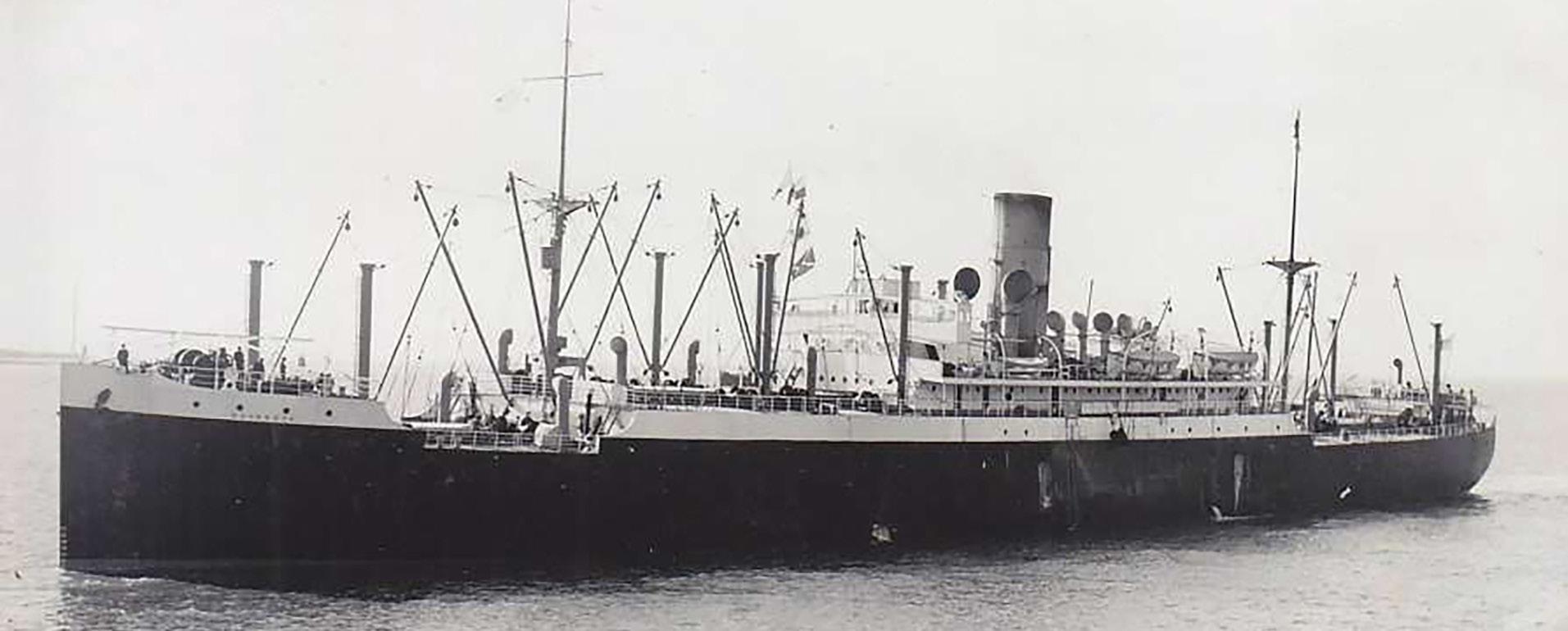
SS Navasota • 1917-1939 EXPLORE.US 56 NAVIGATING NAVASOTA’S HISTORY
The USS Navasota (AO-106) was an Ashtabula-class
replenishment oiler owned by the U.S. Navy from 1947 until 1973. The ship earned nine battle stars for Korean War service and 14 campaign stars for Vietnam War service. In 1964 and 1965, the Navasota underwent “jumboization.” That $15 million overhaul involved the lengthening of Navasota’s hull as well as the installation of additional cargo capacity. The ship operated in the Gulf of Tonkin and in coastal waters off North and South Vietnam in support of United States Seventh Fleet warships conducting operations in the Vietnam War, with Subic Bay as her base of operations.
The Navasota was involved in a tragedy in 1966. Sometime before midnight on February 4, 1966, the vessel had refueled the USS Brinkley Bass (DD-887) and the USS Waddell (DDG-24). After refueling, the Brinkley Bass accidentally rammed the Waddell near its centerline. The repair team that had been dispatched from the Navasota was amidst being flown back via helicopter when, unbelievable, the rotor blades begin to break apart sending the helicopter into a spin before crashing into the ocean. Miraculously, most of the Navasota team survived the crash, and were treading water, struggling to keep their heads above the stormy waters.
A second helicopter was hastily dispatched to rescue the sailors, but as it approached the crew in the water, it also went down. From the decks of the nearby ships, it appeared that the helicopter had gone down right on top of the sailors! Defying all odds, the second helicopter also missed hitting the Navasota team members that were treading water in the rough seas.
Sadly, three of the Navasota’s crew members perished in the incident. The surviving sailors were finally rescued by a third helicopter and flown to the USS Ranger where they were examined and treated for any injuries. When the Navasota repair team was deemed medically “fit,”
they were flown ahead to the Philippines where they would reconnect with the rest of the crew.
In the summer of 1967, the Navasota was back to Long Beach for upkeep and U.S. West Coast operations until she again deployed to the Western Pacific on January 5, 1968, to assume support duties for Seventh Fleet forces off Vietnam. Through 1970, the ship would deploy to the Western Pacific for six to eight months of each year, spending the remainder operating out of Long Beach as part of Service Force, Pacific Fleet, in support of United States First Fleet operations and Fleet Training Group, San Diego, California. The Navasota was decommissioned in August 1975, whereupon the vessel was transferred to the Military Sealift Command and served as USNS Navasota (T-AO-106) until 1991. The historic vessel was finally taken out of service in 1991 and stricken from the Naval Vessel Register in 1992. Sadly, the Navasota was sold for scrap in 1995. It might have made an interesting facility for a Navasota museum, though it clearly would’ve been oversized for the Navasota River.

Discovering Navasota
Today, there is much history still to be uncovered in Navasota. The lawmen, politicians, artists, musicians, hoteliers, merchants, farmers, ranchers, and Navasotans of every stripe who have made Navasota home over the past have left their indelible mark on Texas history. The buildings, streets, monuments, museums, and people tell the story of a resilient people that defied the odds and survived wars, epidemics, lawlessness, and economic trials over the past 170-plus years to carve out a stillgrowing city that treasures and celebrates its rich past.
57 EXPLORE.US
USS Navasota (AO-106) • 1947-1975
2023 is a new year for us, and like anything new we are energized and ready to tackle it head on. The “feel” for 2023 is fresh: fresh energy, ideas, and services from your Chamber. We are introducing new products for our tourism businesses, offering educational discussions on topics that are of today’s importance, and focusing efforts on getting your business out there.
Economics are always up and down, and some years are more down than up- but Texas and most importantly, Grimes County show a resilience that is worth bragging rights in commerce. Our employment rate is steady and climbing, our sustainable income level is more competitive than it has ever been- and our local government is paying more attention to economic development, and local business more than they have in the past.
Post-pandemic Grimes County proved that we could bounce back, maintain small and large businesses, and introduce new services and products without missing a beat.

With Chamber memberships at over 300+ and growing- our knowledge is deep, diversified and covers every aspect, topic, service, and corner of business in Texas and internationally. Because of you, your knowledge, skills, and business savvy is what makes Grimes Co. competitive. This year is our year to showcase Grimes County- we’ve already started and can’t wait to present to the world what we have to offer.

Get ready Grimes County- 2023 is our year and we’ve got room for you to join us on the ride!
Lucy
Ybarra
EXECUTIVE DIRECTOR
 NAVASOTA-GRIMES CO. CHAMBER OF COMMERCE
NAVASOTA-GRIMES CO. CHAMBER OF COMMERCE
WWW.NAVASOTAGRIMESCHAMBER.COM








EXPLORE.US Downtown & Around NAVASOTA Restaurants RAIL & RYE (936) 227-4400 101 RAILROAD STREET • NAVASOTA RAILANDRYE.COM CAFE M BLOOMERS (936) 870-3277 8101 HWY 6 • NAVASOTA MARTHASBLOOMERS.COM LOS CABOS MEXICAN GRILL (936) 727-5123 8731 HWY 6 LOOP • NAVASOTA WWW.LOSCABOSNAVASOTA.COM CLASSIC ROCK COFFEE CO. (936) 727-5613 129 E WASHINGTON AVE • NAVASOTA CLASSICROCKNAVASOTA.COM LAREDO TACO COMPANY (936) 825-6644 1930 SH 105 E • NAVASOTA LAREDOTACOCOMPANY.COM EL BIZCOCHO FELIZ BAKERY (936) 825-4022 518 WASHINGTON AVE • NAVASOTA GOOGLE.COM 60 DOWNTOWN & AROUND
(830)
CHINA INN

(936) 825-7678 111 N LASALLE ST • NAVASOTA MENUTEX.COM





(936) 727-5086
CARROLL’S GIANT BURGER

(830) 990-2424
711 N LASALLE ST • NAVASOTA ZMENU.COM

(936)

EXPLORE.US 61
4141 COFFEEHOUSE
(936) 825-3161 215 S LASALLE ST • NAVASOTA 4141COFFEEHOUSE.COM
MALLETT BROTHERS BBQ
(936) 825-9440 9339 N HWY 6 LOOP • NAVASOTA MALLETTBROTHERS.COM
LA CASITA MEXICAN FOOD
997-6105 9419 N HWY 6 LOOP • NAVASOTA LACASITANAVASOTA.COM
JOE’S ITALIAN RESTAURANT
1010 S LASALLE STREET • NAVASOTA WWW.JOESITALIANNAVASOTA.COM
STONECROFT MARKETPLACE
(936) 825-2090 203 E WASHINGTON AVE • NAVASOTA WWW.STONECROFTMARKETPLACE.COM BAYLOR LUMBER
(936) 825-3356 310 W WASHINGTON AVE • NAVASOTA BAYLORLUMBER.COM
COTTON + OAK
Shopping
825-8884 119 E WASHINGTON AVE • NAVASOTA FACEBOOK.COM/COTTONOAKTX
PARIS PINK & COWBLOY BLUE
(936) 825-2223
117 E WASHINGTON AVE • NAVASOTA
WWW.PARISPINKCOWBOYBLUE.COM
ACE HARDWARE
(936) 825-6441
604 W WASHINGTON AVE • NAVASOTA TPFINC.WEEBLY.COM
BLACKBERRY & HONEYSUCKLE

(936) 825-1111
102 E WASHINGTON AVE • NAVASOTA BLACKBERRYANDHONEYSUCKLE.COM
RATTLERS COUNTRY STORE

(936) 825-7853
1701 E WASHINGTON AVE • NAVASOTA STRIPESSTORES.COM

NORTHSIDE GROCERY
(936) 825-3950
813 N LASALLE ST • NAVASOTA GOOGLE.COM
Services
TRACTOR SUPPLY CO.

(936) 825-7758
9320 HWY 6 • NAVASOTA WWW.TRACTORSUPPLY.COM
CITIZENS STATE BANK
(936) 825-3662
9109 TX-90 • NAVASOTA WWW.CSBTX.BANK


PRESCOTT PROPERTIES
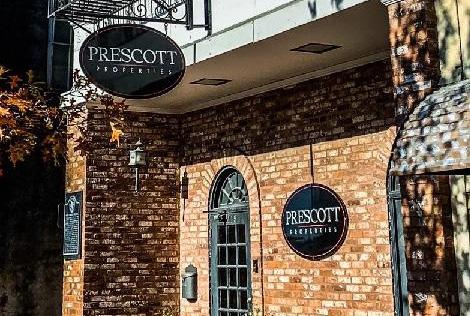
(936) 825-3008
115 E WASHINGTON AVE • NAVASOTA
PRESCOTTPROPERTIESTX.COM


MCDOUGAL & MOORE
(979) 764-4000
NAVASOTA, TX
MCDOUGALANDMOORE.COM
EXPLORE.US
62 DOWNTOWN & AROUND
PECAN LAKES GOLF CLUB
(936) 870-3889
2001 FAIRWAY LN • NAVASOTA PECANLAKESGOLFCLUB.NET

MCLAIN MEDIATION SERVICES



(936) 825-6533
211 E WASHINGTON AVE • NAVASOTA MCLAINMEDIATIONSERVICES.COM
TEXAS PROS A/C & HEATING

(936) 419-1833
NAVASOTA, TX
TEXAS-PROS-AC-HEATING.BUSINESS.SITE
P.A. SMITH HOTEL
(936) 237-6484
111 RAILROAD ST • NAVASOTA THESMITHNAVASOTA.COM
THE RED VELVET INN & GALLERY

(979) 799-7698
803 S LASALLE ST • NAVASOTA REDVELVETINN.COM
NAVASOTA INN
(936) 825-7775
9460 N HWY 6 LOOP S • NAVASOTA GOOGLE.COM
BEST WESTERN INN

(936) 870-4100
8965 HWY 6 • NAVASOTA BESTWESTERN.COM
COMFORT INN & SUITES
(936) 825-9461
9345 HWY 6 • NAVASOTA CHOICEHOTELS.COM

VANGUARD MOTEL
(936) 825-6497
711 N LASALLE ST • NAVASOTA GOOGLE.COM

EXPLORE.US
63
Hospitality

(936) 727-5086 1010 S LASALLE STREET NAVASOTA, TX 77868-4238 WWW.JOESITALIANNAVASOTA.COM

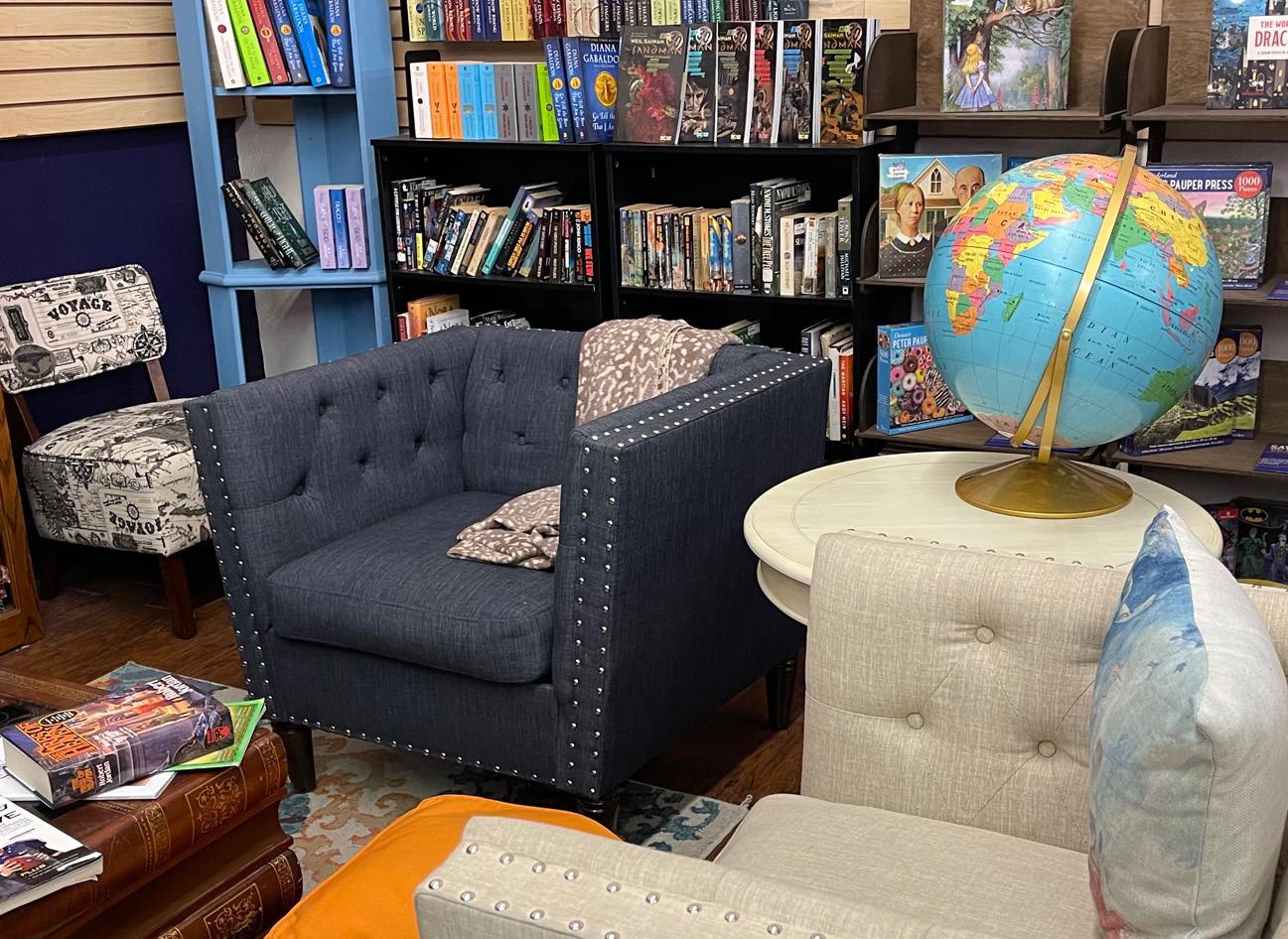




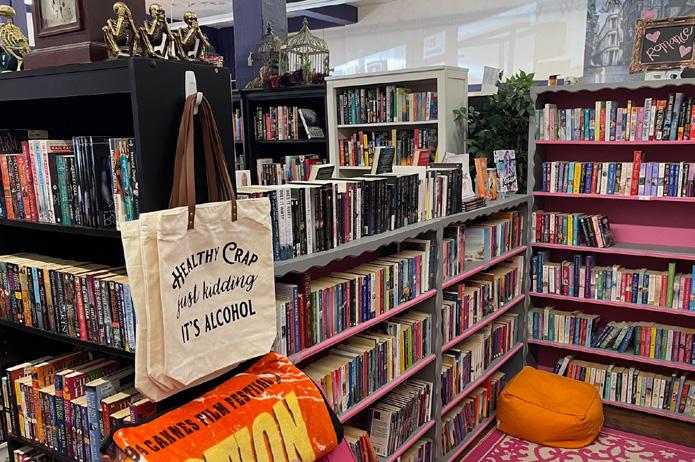
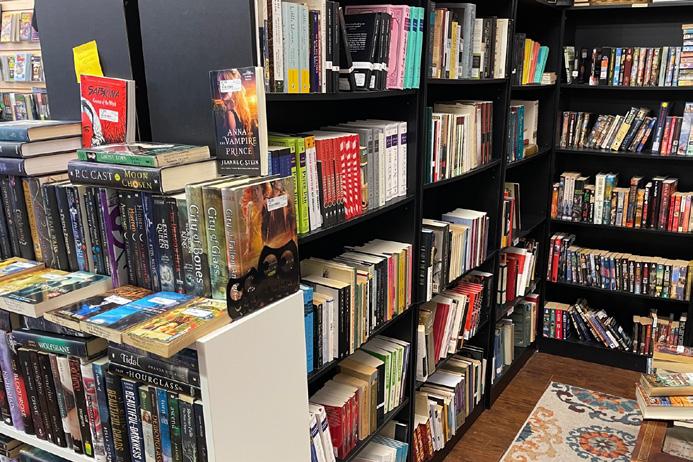

120 E WASHINGTON AVE | NAVASOTA, TX 77868 | (936) 900-4662 | MUDDYWATERBOOKS.COM


8731 Highway 6 Loop • Navasota , TX • (936) 727-5123 www.loscabosnavasota.com













 Bert Miller - mayor
Bert Miller - mayor























 WRITTEN BY RUSSELL CUSHMAN
WRITTEN BY RUSSELL CUSHMAN

 Ferry crossing the Navasota River
Photo courtesy of Russell Cushman
Ferry crossing the Navasota River
Photo courtesy of Russell Cushman






























































 WRITTEN BY MARK TAYLOR
WRITTEN BY MARK TAYLOR


 8101 STATE HIGHWAY 6
8101 STATE HIGHWAY 6
















 NAVASOTA-GRIMES CO. CHAMBER OF COMMERCE
NAVASOTA-GRIMES CO. CHAMBER OF COMMERCE














































